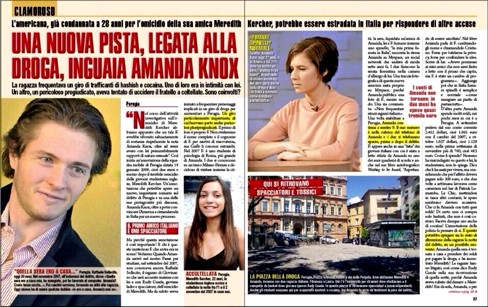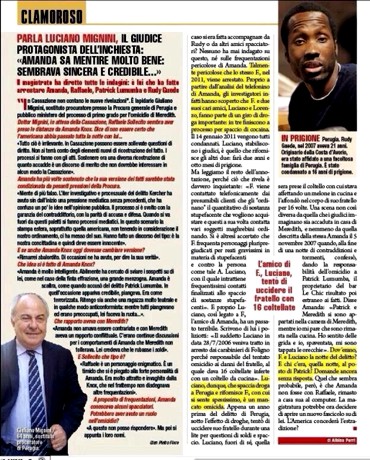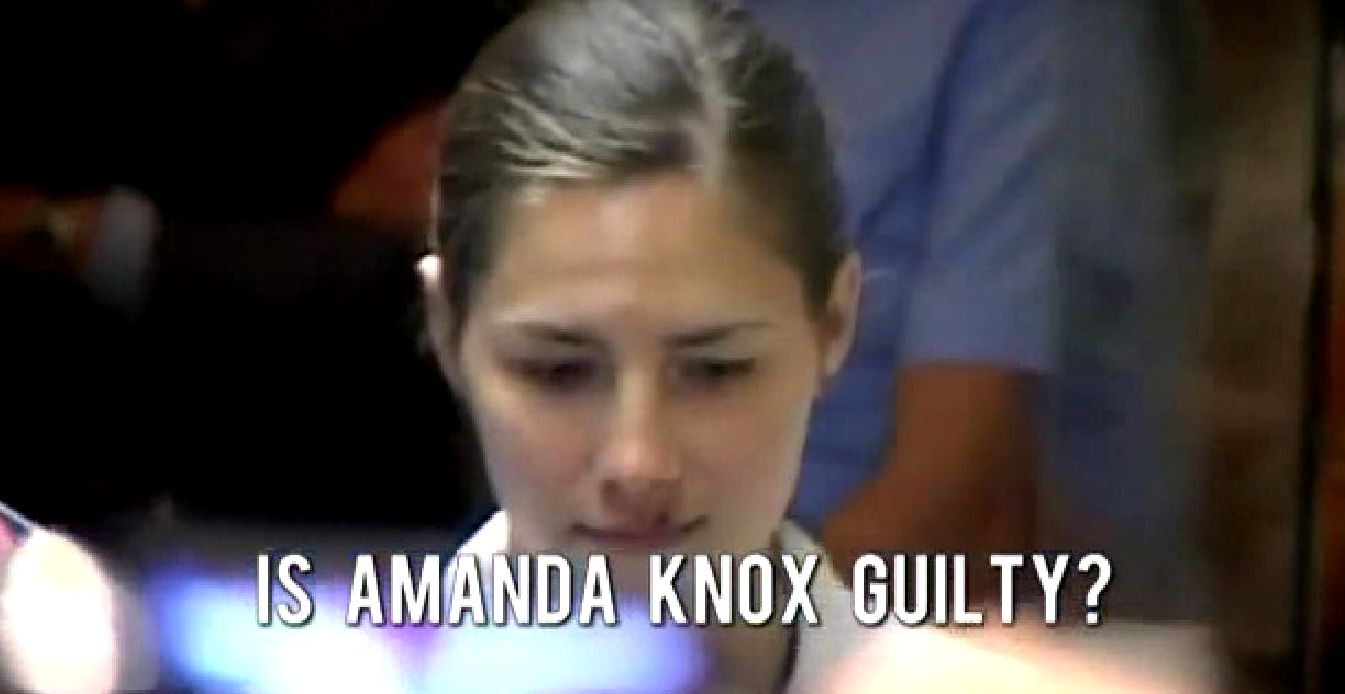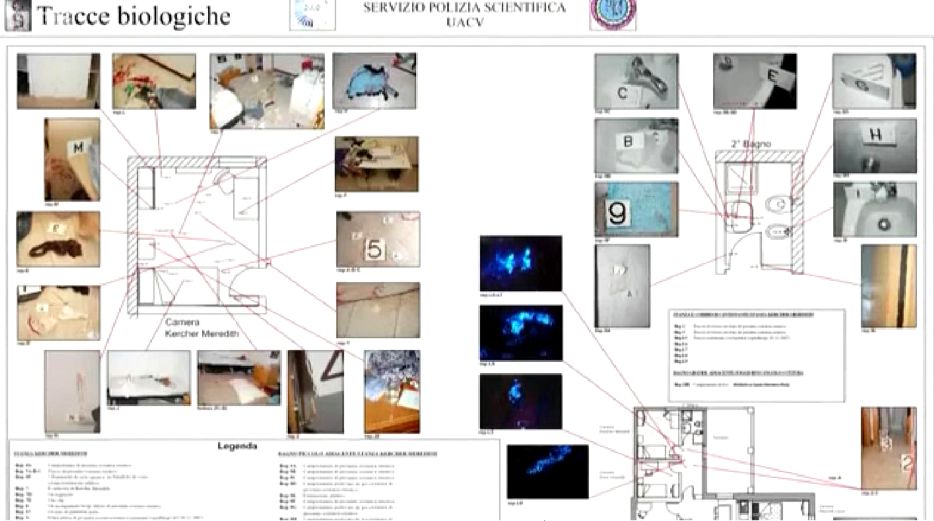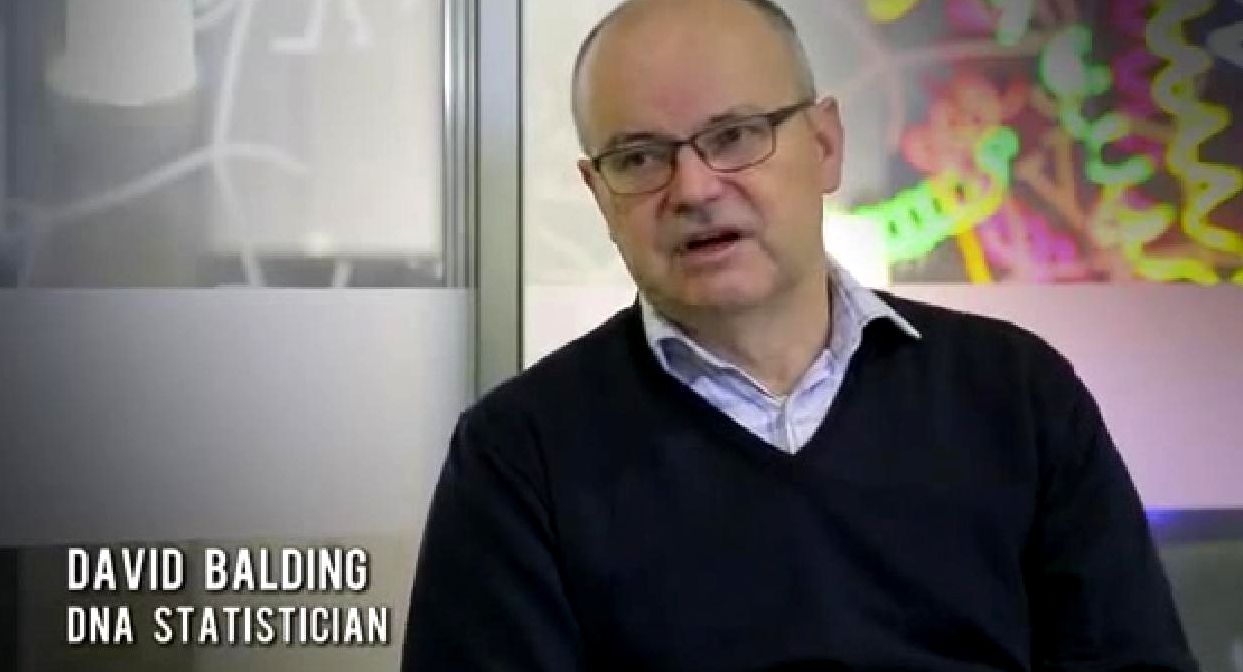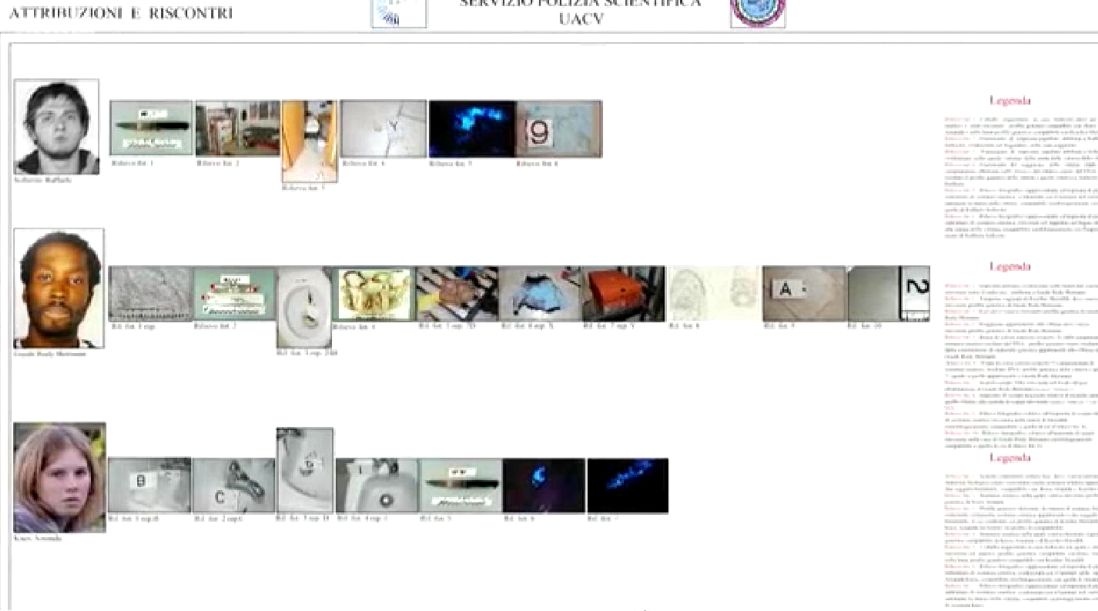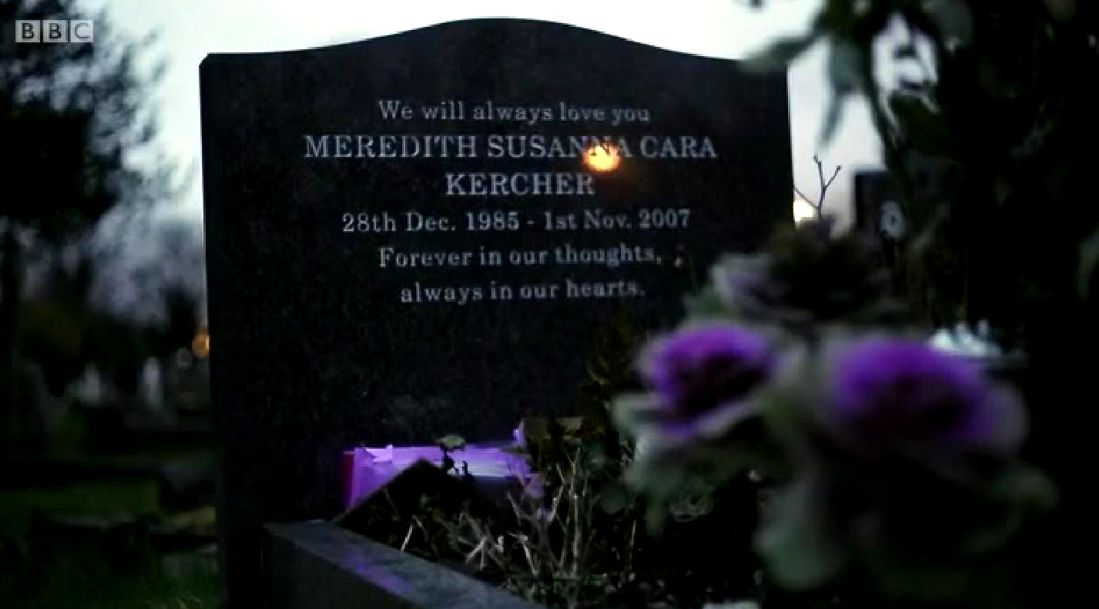
Headsup: The deep expose with associated comments below was first posted by Finn MacCool on 12/20/13. Knox's failed calunnia trial in 2009, failed 1st appeal in 2011, and failed final appeal in 2013 had come and gone. Some 500 zombie misrepresentations had recently reappeared in Knox's English-only 2013 book. See main support documents here and also (vitally) this and this and this.
Category: Excellent reporting
Saturday, April 02, 2016
Excellent “Is Amanda Knox Guilty?” Report By Vogt & Russell Close To 100,000 YouTube Views
Posted by Our Main Posters
This is just under one hour long - and very good. Viewer numbers just passed the 99,500 mark. About 1,000 a week.
Wednesday, December 16, 2015
“Spotlight” Movie About Fine Example Of Investigative Journalism Is Oscar Best-Picture Favorite
Posted by Peter Quennell
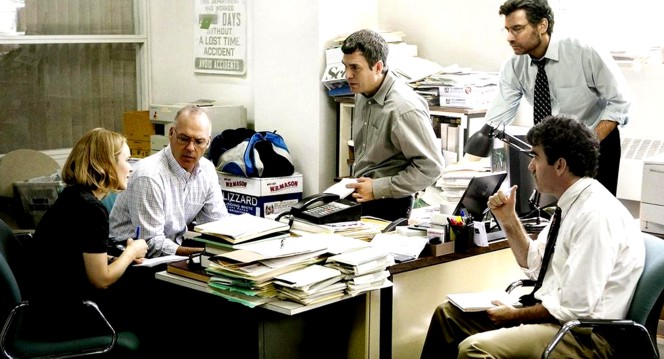
Hollywood has rewarded movies about investigations many times over the years.
Maybe not such a bad thing when media are under such internet and political pressure - and too often prone now to propagating dishonest PR and misleading their audiences, as we have seen.
“Spotlight” portrays an investigation by a Boston Globe newspaper team in 2001 and 2002 into myriad sexual abuses by priests in that very catholic city.
This was the first-ever such investigation into the sexual abuses. It started very small - less than 10 priests were initially suspected - and ran into roadblocks and was nearly shut down several times.
it eventually cascaded into the exposure of hundreds of priests in the US and many more worldwide. Numbers of victims are unknown but worldwide are numbered at minimum in the hundreds of thousands.
The pace of the film is phenomenal. There is jolt after jolt as the reporters - most of whom are themselves catholic or lapsed-catholic and take some heat - in repeated disbelief find the numbers of priests and victims growing and growing.
Pope Francis himself is reported as in favor of investigations continuing. The various support groups representing the numerous “survivors” have welcomed the film.
Some American priests have raised some objections. They dont seem to fault the movie for honesty though.
Prophet’s Prey is a similarly gripping and unflinching movie, about children abused by fundamentalists. It is a documentary, and may be nominated for an Oscar in that category.
Friday, August 07, 2015
Knox Book Phenomenon: PR Reaction Way Too Strident & Only Grows Suspicion She DID Do It
Posted by Nick van der Leek
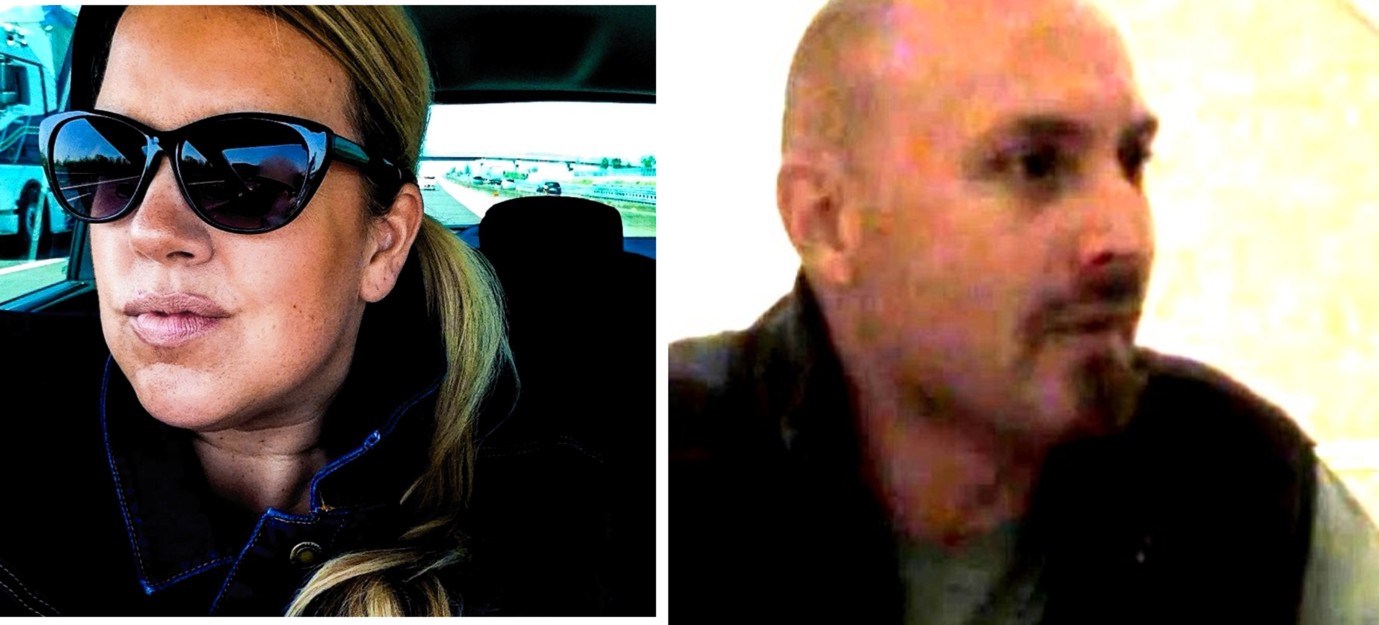
Reporters, crime-book writers, and photojournalists, Nick van der Leek and Lisa Wilson
Overkill. A Sure sign of bad PR. As someone once said “An eye for an eye leaves everyone blind.”
What’s interesting for Lisa Wilson and myself as True Crime authors and wrieters of Dark Matter and Deceit is that there are not only always two sides to every story, but two factions as well.
When the one faction believes us not to belong to theirs, well, then there is war. Mudslinging, slander, insults ““ everything except a genuine discussion of the case.
From where Lisa Wilson and I stand, which is hopefully in the middle and on the side of Lady Justice [who is blind, or blindfolded] both factions are mirror-images of each other. Both sides are throwing stones, like the protagonists in the Middle East conflict, both have their grievances, and plenty of stones to throw.
And like the Middle East, the two factions in the Amanda Knox case have been in a war of mostly words for years. Who has won? Amanda Knox seems to have eeked out some sort of victory, but though recently engaged, shows no signs of getting married, and it’s possible the wedding is off.
All is not always what it seems.
Before highlighting a few of our haters, I want to touch on a quick incident that happened on twitter literally in the last day. We had one of our followers enthusiastically report on one of the books she’d read [on Jodi Arias] and promise to give a review the same day. We get bad reviews and we get good reviews, and especially when a book is new, reviews matter. When I followed up with a tweet and then a second tweet, our enthusiastic reader said she felt pressured and obligated and then blocked me on twitter.
What I’m trying to illustrate here is that even those you agree with our work aren’t necessarily above board themselves. What we’re trying to achieve with our books isn’t merely justice in the court of public opinion, but we also want to encourage people to go out and live their lives in an honest, genuine and hopefully happily-ever-after way. One of the ways we interrogate these cases is we try to fathom the underlying psychology of the criminals, and we try to understand these crimes as cautionary tales that we can learn from, and hopefully avoid spiralling into ourselves.
Which is why Lisa and I find the constant lobbing of stones and jibes a little unfortunate. When I confronted one of our supporters with their constant ping pong [block, reporting, badmouthing etc especially on twitter], the response was: but didn’t that debate suit you when we were reviewing your books.

We’ve love our reviewers to be honest, even when they disagree, especially when they disagree. We’d hate our books to be part of a sort of football that is kicked about to score personal points for either side. Our narrative isn’t intended to score points for either team, it’s intended to solve “˜the mystery’ of Meredith’s death. Lisa and I see very little debate on that. Maybe that’s fair given the time since Meredith’s death, but for me this is a crying shame.
I came into this investigation unsure of whom to believe. When you see ““ as you see in the Middle East conflict ““ two sides engaged in a tit for tat battle, it’s hard to come away with a sense that either side is right. It’s even harder to trust that either side is going to even be able to be unbiased and fair in their assessment of things. Does that make sense?
Of the 30-odd books I’ve written and co-written with Lisa Wilson, DOUBT [on Amanda Knox] was the first to face accusations of plagiarism. It became a lightning rod for haters and Pro Justice folk, and to date is my most reviewed book on Amazon by far. To be honest, Amanda Knox’s fans are by far the most vindictive and malicious of the folk we’ve encountered through the course of nearly 20 True Crime books. To be honest these people and their underhanded behaviour, even their language, don’t reflect well on their patron at all.
They descend on any criticism of Amanda in organised groups that tag team each other. Do these people not have day jobs? Because it’s hard to believe such tactical and practised viciousness isn’t bought and paid for. Such frenzied attacks inspire responses, and there’s been a lot in the comments section under various reviews ““ good and bad ““ of DECEIT. Does that mean people actually read the narrative or are debating it? In a few cases they are, and in a few cases people have contacted us and let us know where they have learnt something or where they disagree, and this is tremendously useful and helpful.
But what about the plagiarism accusation? It was at one time the most popular “˜agreed on’ review when DOUBT was published, so does that mean the plagiarism accusation was actually valid? Or was the accusation a cynical attempt by one side to throw a stone at another side because they didn’t agree with something. Shoot the messenger in other words, forget the message.
Why would someone ignore a message, ignore a narrative unless there’s an implied threat that it could be true?
If it wasn’t true, would anyone really care? But in the context of justice denied, the stakes are rather higher when truth and facts are obscured from the public view. And then it seems, in order to defend the indefensible, one resorts to dirty tricks, like suppression of freedom of speech, and slander. The biggest ironies are the accusations that we are profiting from the tragedy.
Or that we’re slandering someone in our books [that’s the real crime]. It’s ironic when a murder suspect and her boyfriend together earned $5 million for their books, and have numerous and very real slander charges they have faced. In Knox’s case she’s already been found guilty of her false incrimination of Lumumba. Lumumba never got off because Knox said, “Oh, hang on, that’s not right, sorry I made a mistake, it wasn’t him.” Lumumba got off because he had an alibi and someone from the bar came forward to vouch for him. In Sollecito’s case he must still defend allegations of police conduct made in his book [and so must Knox’s parents.
Since Knox was found guilty of slander she served a few years for that. She hasn’t paid restitution to Lumumba [who lost his job and moved to Poland] to date. If Knox is innocent, why isn’t she suing the Italian authorities for wrongful imprisonment? Lumumba did and got a hefty pay-out, so why doesn’t Amanda? Why aren’t we talking about that? But no, we ““ those of us writing books about the trial ““ we are the real criminals, we’re the slanderers, we’re profiting out of the loss of the poor victim [no not Kercher, Knox]. This is a crazy inversion of the facts, and only the intellectually weak actually fall for it.
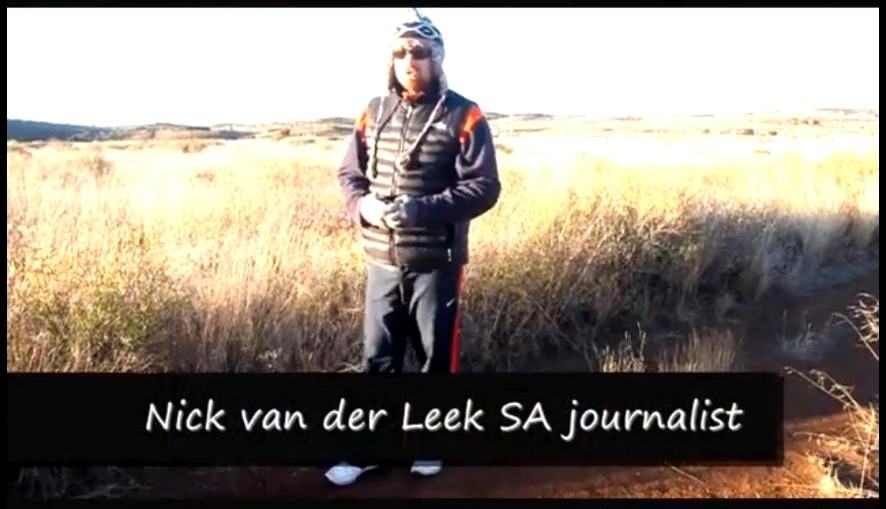
Coming back to Pruett’s plagiarism accusation: was it an exaggeration, was it a lie? Was it based on real plagiarism? Within a few days ““ subsequent to a phone call to Karen Pruett, and a lawyer’s letter delivered by overnight courier to her work address [she’s a hairdresser in Seattle]”“ DOUBT was once again available online. We elected to remove any references we made to Pruett’s work ourselves [credited in every instance] and repackage the narrative without including references to Pruett’s timeline in a new book, DECEIT. Of course then the accusation is that our views, since we haven’t referred to Pro Knoxers, is biased and unbalanced. Interesting isn’t it: you quote them and they accuse you of plagiarism, you don’t quote them and they accuse you of being biased.
I only subsequently saw Pruett is endorsed on Amanda Knox’s own website, and was probably paid to research the timeline she produced for Ground Report, which is itself a site facing shutdown due to financial difficulties. The first 80% of her research seemed fairly solid and reasonably unbiased, much of it did reference court testimony, but the last 20% [relating to the crucial timeline of the crime itself] became increasingly dodgy, and part of the original DOUBT narrative highlighted this.
If Pruett had received a hefty payment for her timeline and someone had come along and analysed all of it only to find sections of it to be”¦.well”¦wanting, well, no wonder she wanted herself excised out of her book. No wonder she wanted the book blocked. So was it really about plagiarism then [because I referenced all quotes to Pruett, and all her quotes were italicised] or was it about Pruett protecting Pruett?
In the end the blocking of the book [for a few hours, perhaps a day or two] by haters created curiosity amongst the Pro Justice folk, and this was invaluable PR for us. Upwards of 40 people asked for a PDF of the original DOUBT manuscript to be sent to them, and at least half sent through carefully considered reviews and feedback. As a result of these reviews and the endorsement of Meredith’s supporters, when DOUBT returned as DECEIT it immediately sold like hot cakes.
Right now it’s currently in the top 20 in Amazon’s “˜Criminal Procedure’ category, and the interest in that book has encouraged us to write a second [DARK MATTER, #15 on Amazon] , and in two weeks we begin with a third [UNDER SUSPICION]. We plan on writing around a dozen more books on this case, and we hope by around midway we will have galvanised a real conversation, not around “˜libellous wankers’ or “˜plagiarism’ or “˜removing Jesus from the Last Supper’ but the most legitimate questions of all:
1. Did Amanda Knox get away with murder?
2. Can the courts in Italy [or the USA or SA] be trusted, even when the world is watching?
3. Is justice up for sale, is it a PR game?
4. If it is, what can we do as the Court of Public Opinion?
As someone sympathetic to Meredith Kercher wisely pointed out in a recent review, the biggest mystery in this case is that it is a mystery at all. My suggestion is we do something more constructive than throw stones at each other.
Thursday, July 16, 2015
Amazon Reviews: Are Knox PR’s 1000 Dishonest Paid Reviews Losing Traction?
Posted by Our Main Posters
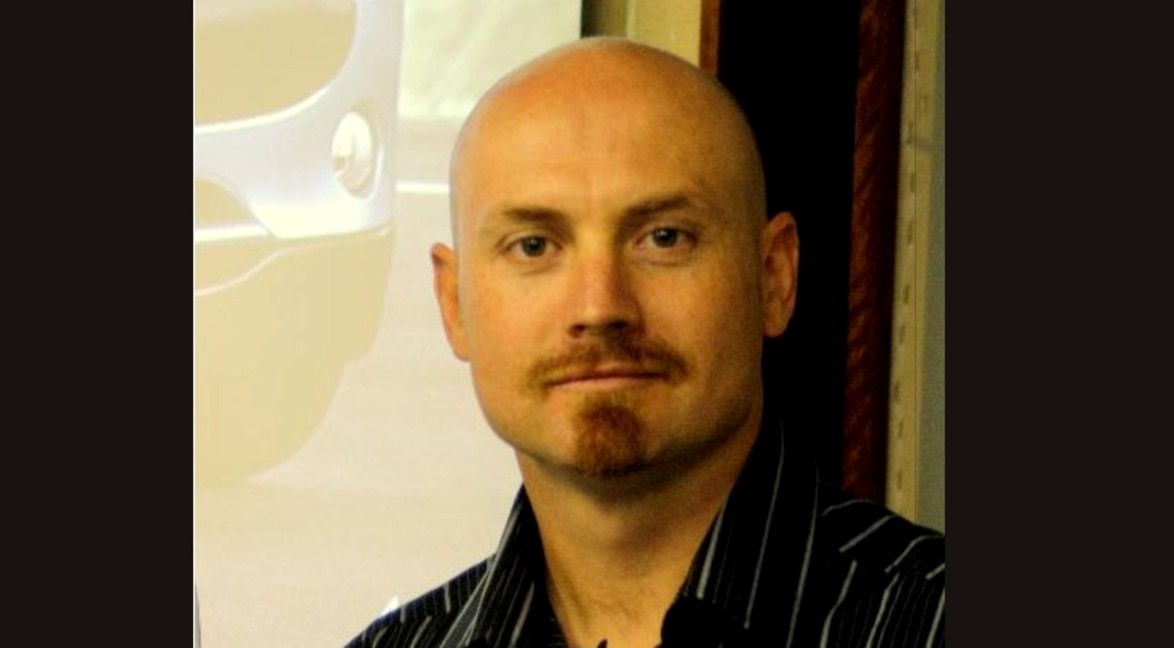
Amazon reader reviews may or may not dictate how the sales of a book make out.
Sales of the Sollecito and Knox books have been way below expectations despite dozens of glowing reviews - and by the way numerous repeats of the hoaxes and defamations.
At the same time sales of objective books on the facts of the case and the psychologies have been meeting expectations despite the absence of advertising or a paid-for PR campaign.
Here are some of the spontaneous review for the two books “Deceit” and “Dark Matter” by Nick van der Leek and Lisa Wilson.
By atlantic 1 “atlantic1” on June 3, 2015
This is an exceptionally-well-written, complex (but lucid and fast-paced) account of the murder of Meredith Kercher (a British exchange student) in Perugia, Italy, and the unconvincing behavior and at times multiple stories of the main suspects: Amanda Knox (the American roommate), Raffaele Sollecito (Knox’s Italian boyfriend at the time of the murder), and Rudy Guede (Ivory Coast native adopted by an Italian family, currently the only one serving time in Italy for the murder).
Other characters are prominently featured, along with a lot of background information from reputable sources.
What I really liked about the book is that many links throughout the text (in the Kindle edition that I purchased) send the reader to outside documents (e.g., photographs) that would otherwise take a while to research (warning: some visuals are pretty disturbing, but one always has the option of not clicking on the link).
The book has a fluid style and is absolutely engrossing, I highly recommend it.
By Leigh on June 8, 2015
Nick has done a superb job in ‘Deceit’ of reviewing, combining, comparing, and contrasting vast amounts of information from many different sources on Meredith Kercher’s case. As someone who has followed anything and everything of substance I could find on the case since 2007—I appreciate his massive effort, and certainly agree, some amount of speculation is required. What is especially effective about Nick’s speculations is that they are based on confirmed ‘knowns’ about the case from genuine sources such as investigations, witness testimony, interviews with Meredith’s friends, housemates, and others who knew AK (rarely spell out AK’s name since I hold extreme animus for that wrongly acquitted psychopath!).
While I don’t agree with every speculation of Nick’s—I have many of my own—I do appreciate that he examines what’s real. For everyone trying to follow the case, it’s been difficult to sift through the exhaustive amount of subterfuge, deceit, and duplicity from rabid AK fan club members, a professional ‘damage-control’ PR / media manipulation machine, lazy mainstream US media lapdogs, and AK’s lying family—people and organizations who clearly would stop at nothing to defend their favorite two murderers. The worst of them always show up to deliberately hurl their vile insults and spew hatred at anyone who doesn’t howl about the great Italian conspiracy perpetrated against the murderer AK, or who don’t constantly drool like a fool over AK’s beauty and brilliance. The AK jerks are certainly out in force at trying to bring down this book—they try and destroy anyone who seeks to get the truth out about Meredith’s murder and AK’s direct involvement in her death.
By S. Gleason on June 7, 2015
Thank you for reminding people of the truth Nick. Wonderful book. A breath of fresh air. Please don’t listen to propaganda being posted here in the reviews. Listen to the abundant case evidence against all three. Justice for Meredith and her family.
By M Thomson “Elizabeth” on June 2, 2015
This book is a interesting and fast paced read. Suspicion builds naturally as the author follows the two defendants in the hours before and the murder. Their actions and changing alibis are well documented here. Amanda Knox falsely accused Patrick Lumumba in a very short time just after learning Sollecito said she went out that night. I wonder if the one star reviewers would rather you not know this.
By Margaret Ganong on May 25, 2015
The author has a good grasp of the facts and makes a case that is far more convincing than the two recently and bafflingly acquitted Knox and Sollecito have ever been able to do. Indeed, one of the most compelling reasons to read this book is for its effort to set the written accounts of Knox and Sollecito side by side, revealing the many ways they don’t add up and are at odds with one another.
By Amazon Customer on May 25, 2015
Thoroughly enjoyed this book. I cannot wait for the next one in the series. There HAD to be more to this murder ... and I am now sure that there was more than one person involved. Poor Meredith ’ s family having to live with this. I just love the narrative that makes Nick’s books SO enjoyable.
By kris arnason on May 26, 2015
Nick van der Leek has written an extremely cohesive narrative about the tragic Meredith Kercher case. The author takes you through what likely happened that horrific night, and why Amanda Knox & Raffaele Sollecito’s stories don’t add up, all the while providing the reader with hundreds and hundreds of hyperlinked images, news reports, and audio clips, etc. that have been consolidated, collected and embedded in this one narrative. Everything sourced, right at your fingertips. A must read for people like me who have followed this case from the beginning and folks just getting interested and want to learn all they can. Thanks Nick! Looking forward to more from you about this case!
By Caroline on July 5, 2015
I bought this book because of the reviews! I’ve never done that before but I’m so intrigued by the almost angry tone to all of these one star reviews. It just makes me wonder if a nerve was hit. Somebody’s hiding something maybe? Anyway, I just have to read it now. Will come back with full review when I’m done.
By Amazon Customer on June 1, 2015
Finally! An honest book of what really happened to Meredith Kercher! Can Nick interview AK & RS on TV in the USA? I am sure he would ask REAL questions!
By Jeff “jeffski” on May 26, 2015
It is a disgrace that Amazon allows these Amanda Knox trolls a platform to spread hate and abuse people simply because they write a review for a book that these people disagree with. Amazon must act on these known frauds/cyber bullies who suppress and insult/abuse people on forums/Comments section and social media.
This book is a excellent read and obviously hits a nerve with Knox’s followers as the negative comments and abuse/insults aimed at author prove. Please look beyond the rent a hate mob and read the book and come to your own conclusion.
By Columbo on May 25, 2015
This is an excellent true crime story with highly accurate and precise detail of how Amanda Knox, Raffaele Sollecito and Rudy Guede all killed Meredith Kercher. I highly recommend this book for anyone who wants to know the truth of this case in a very revealing and fast page turning account of what really happened in this case.
By Michela on May 30, 2015
Excellent read.
By Maria Chinnapan on May 26, 2015
A great read!, very down to earth appraisal of what may have happened. No nonsense and to the point
By MCD on May 31, 2015
Again this formidable true crime writer has come up trumps with an incredibly well researched interrogation of a crime that continues to baffle the world. The detailed sequence of events is painstakingly pieced together. I had only superficially followed this case when the news initially broke so have been fascinated by this book which has filled in many gaps and highlighted the inconsistencies in the behaviour of Amanda Knox and her boyfriend, who said what, who lied about what, etc.
In addition to the bare bones of the case, the author’s classic approach is the use true crime as a melting pot of evil and the extremes of human nature. He asks unsettling questions about human behaviour, herd mentality, apathy and our place in society - a society where a crime like this one can and does take place and despite all the investigation, the waters are still muddied in the deeper pools.
For those who appreciate that truth is stranger than fiction and like to delve deeper into these cases, the author brings it all together for you, with a dollop of enriching ‘food for thought’.
By Truth Seeker on May 26, 2015
It is the behavioural evidence which has always bothered me about this case, and it has always seemed that everything said/done by the ex defendants had to be explained away or justified. The author has cross referenced the two versions written by them in their memorials, and needless to say, there are major discrepancies.
Unless we expose the inconsistencies, then the two will have literally got away with murder. Legally this may be the case, but analysis provided by this book goes some way to keeping the memory of Meredith honoured, and ensuring that there are some still fighting for justice for her. Do buy the book- it has none of the obfuscation and image management that we have been subject to in the past years.
By Ipsos Maati on May 30, 2015
Why is Amanda Knox panicked about this book, and why did she try to have it banned?
Deceit shines light on the truth about the murder of Meredith Kercher, and the dishonest effort to free her.
Exonerated does not mean “innocent”.
By elizabeth on May 26, 2015
Deceit is a fascinating read no matter where you stand on the recent verdict. Fast paced but manages to bring a cohesive dialogue to days before and after the murder
By A. Futo “911 coincidence analyst” on May 26, 2015
Well written book by author Nick van der Leek, with all new research and links to original reporting and publicly available information about the murder Of Meredith Kercher.
Is Amanda Knox, the main suspect in the case, guilty of murdering her room mate as many believe, or was she railroaded by the prosecution, as claimed by her friends and family?
The author skilfully navigates the questions of motive, means, and evidence, starting with the premise that this is a case that begins with and is marked by many layers of deceit, as Knox first accuses an innocent man, Patrick Lumumba, then must lie and keep on lying to distance herself from the crime she implicates herself with by admitting to her presence at the scene.
Her co-accused, Raffaele Sollecito withdraws then confirm her alibi, and the other person evidence shows was involved in the sexual assault that preceded the murder, Rudy Guede, also tries to distance himself by running away then denying her involvement, then accusing the two of them in a letter to the media.
The author’s hypothesis of what happened is based on a finely rendered psychological evaluation of Amanda Knox. No matter what the final decision will be, this is a case that will be discussed for many years to come. I look forward to his next book of the series.
By Leigh on June 25, 2015
After more than 7 years of following Meredith Kercher’s murder case closely as the saga has wound through the arcane Italian justice system, I am completely convinced that AK & RS are her two other murderers who have ultimately escaped justice. Their final acquittal has not changed anything for me. Yet I’ve been asked by others who have more than a slight interest as to why is it I’m so certain, what’s your 3-minute elevator speech? Well, an elevator speech doesn’t exist, but in ‘Dark Matter’ and its prequel, ‘Deceit’ and I hope, in more follow-up e-books on this case, a reader can get as close as possible to a comprehensive full-view, what-happened, tell-me-everything explanation without having to slog through over 1,000 pages of trial documents translated from original Italian and endless arguments from two deeply entrenched opposing sides. Trying to read through it all could easily take most of an interested person’s discretionary time for a lengthy period of their lives. And who needs that, right?
What’s special about ‘Dark Matter’ is how easy it is to read, how well the authors guide readers through crucial evidence while using a technique borrowed from Socrates—keep asking yourself common sense questions as you’re reading. ‘Dark Matter’ examines the early case from a big picture view—the most prominent evidence, the investigation, what happened in days before, and after Meredith’s murder, and what was the behavior like of those near Meredith? Then go further, examine what AK & RS wrote in their own books about the murder. Do they agree with each other or give themselves away by not agreeing in crucial areas? ‘Dark Matter’ creates these scenes while assisting readers in finding their own answers.
‘Dark Matter’ examines what is important to know, then asks readers to consider: ‘does it make sense?’ or ‘were these actions meant to deceive and lead investigators astray?’ ‘is there an innocent explanation?’ ‘does unusual behavior indicate guilt, youthful carelessness, or something else?’ ‘Dark Matter’ lays out salient evidence found during investigations, and continues to encourage readers to question its importance: ‘where does this evidence naturally lead?’ ‘can we tie the evidence and the behavior together to draw conclusions, and how do we do that?’
‘Dark Matter’ is exactly how I’d want someone to guide me through an enormous case if didn’t know much about it. Don’t tell me what to think, don’t try to persuade me towards your view—show me what is important to know—and I’ll decide for myself; in this, both authors excel.
One area where I completely disagree with the authors is their, what appears to be, complete acceptance of nonsense created by AK’s professional Seattle-based propaganda machine and American author Douglas Preston—these two parties had their own reasons to intentionally malign and destroy Italian prosecutor Giuliano Mignini. Their agendas were obvious to truth seekers—one sought to do ‘damage control and create a villain to take attention away from AK,’ the other, to leverage the murder to create interest in his own book.
Unfortunately this propaganda proved to be extremely effective, and was picked up by most US media outlets that then ran with the deception. Those who know the case from the pro-justice side are keenly aware of how this vicious, deceitful campaign against the prosecutor convinced tens of millions of Americans AK was an innocent who was framed. I hope the authors make an effort to learn how completely they have been deceived and correct these mistakes in future books in this series.
By JJ on July 3, 2005
Great book!! Highly recommended
By Sarah Breen on June 30, 2015
Research and writing are top notch! True investigative journalism into this controversial subject.
By Nicole church on June 27, 2015
I loved your book-you guys definitely did your research and systematically take the reader though some of the most damning evidence in this case. I was impressed at how you tied it all in with the theme of dark matter- very well done and thought provoking.
No need to apologize for your narrative;yes there are some f bombs but it made me respect you more for being authentic and your sarcasm is justified when it comes to this case. Like you both said it would be funny if it wasn’t so tragic. You do a great job calling bulls*** on both murderers using example after example from their own words(in court,interviews,diaries,etc)
I am sure this book has the murderers supporters all in a tizzy- it is easy to spot their attempts to sabotage your deservedly 5 star reviews with their 1 stars. Just look for lots of exclamation points and words in all caps then move right along to the honest reviews that will really help you decide if this book is worth reading- and it certainly is.
Looking forward to your next book and thank you for being the stars that shine light on the truth 😊
By Columbo on June 26, 2015
Another really great book by Lisa Wilson and Nick van der Leek. In this easy to read and compelling book the key events, character aspects of Amanda Knox, Raffaele Sollecito and Rudy Guede and the most significant evidence against them are all objectively weighed and analyzed. Additionally, in a very balanced view, the case for Amanda Knox as promoted by her supporters is also reviewed so readers can make up their own minds. But there is only one conclusion: all three killers murdered Meredith Kercher (RIP). I highly recommend this book for anyone who wants to know even more about this case.
By kris arnason on July 5, 2015
Dark Matter is a must read for everyone wanting to know more about the murder of Meredith Kercher. Those who believed in the lies & cover up of Amanda Knox and Raffaele Sollecito’s multi million dollar PR campaigns will have their eyes opened after reading this excellent book.
By JJ “jj0388” on July 3, 2015
great book!! highly recommended
By A. Futo “911 coincidence analyst”
I read many crime books, and this is one of the really good ones on the case. Amanda Knox’s strange behavior and lies, accusing Patrick Lumumba, her relationship with Meredith, all reflected in the “Dark Matter” of her psychology.She simply is not very believable in her book, and her media appearances have been disasters which is why she’s withdrawn in hiding. Her father hired a PR firm to manage her image, and in the process influenced many sad, gullible people who still try to negate any criticism. Even though Amanda Knox has ‘won’ her case, why are they still posting nonsensical, abusive reviews of a book they never read?
One example, but this is important to me. Her father said that Meredith gained advanced three levels in karate and would not have gone without a struggle. A testimony to her character, but a reviewer writes “that’s an orange belt, beginner’s level”. Sorry, but the people who loved her say she would have fought to the end. So why the lack of defensive wounds, if she was being restrained by only one person?
In the struggle, she managed to injure Amanda Knox, who left her blood behind in the crime scene. (A bloody nose, ear stud pulled out? Left her lamp behind in the room to assist cleaning?) She was photographed with a scrape on her neck, and the police photograph taken on arrest shows the long scratch which she only partially covered with makeup on November 02. Her adoring fans call that a “hickey”, lol. Perhaps Lisa Wilson can collect these reviews as insight into their “Dark Matter” as well?
By GH2006 on June 22, 2015
This book is a perceptive analysis of the evidence in the murder case of Meredith Kercher. Nick van der Leek and Lisa Wilson take you through the court documents, statements made by the suspects as well as the DNA evidence among other things, which reveal the many lies and obfuscations by the public relations firm hired by the defendants as well as the ob-knox-ious murder-supporters who attack anyone who writes about the truth of this crime. (Shown by the flock of 1 star comments with long venomous attacks by haters who haven’t even read the book.)
Written with the same interesting, insightful, and at times entertaining way van der Leek and Wilson hook the reader in from beginning to end. I couldn’t pull myself away from this book that Nick generously gifted to me because this is not about making a profit for them but in getting the truth out there! (In stark contrast to the defendants who made millions selling their version of the crime.) Oh! And this book also shines a light on the way Amanda Knox and Raffaele Sollecito obscure the truth in their own books. That was very interesting as well! I also enjoyed the first book DECEIT and looking forward to the next book! TY
By Bibliophile on June 21, 2015
Awesome humdinger of a book. This book will tell you the truth!
Sunday, July 05, 2015
Our Conclusions In “Deceit” & “Dark Matter” And How Our Journey Took Us To Them
Posted by Nick van der Leek
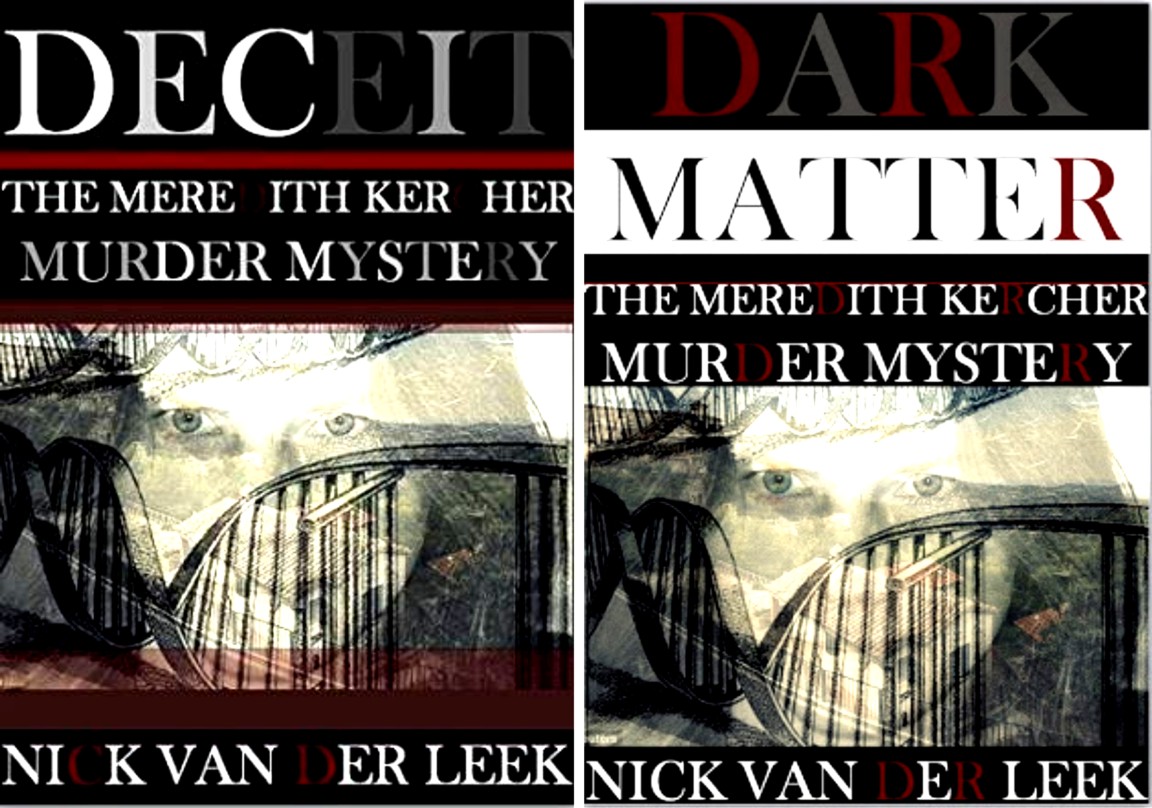
Albert Einstein once said, “It’s not that I’m so smart, it’s just that I stay with problems longer.”
One of the tremendously rewarding experiences we [my co-author Lisa Wilson and I] have as authors is our research forces us to set up camp around questions. We spend time: mornings, afternoons, days, weeks, even months asking questions and pursuing answers. The amazing thing when it comes to True Crime, especially popular crime, is those answers are out there. One merely needs to go out and make the effort to look for them. And keeping looking. Seek and we do find!
What makes our narratives distinctive, I think, is that Lisa Wilson and I more often than not work as a team. How many other narratives have two authors, working from opposite sides of the Atlantic? While Lisa provides a US perspective as a juror and a True Crime buff, I am more interested in the intuitive subtleties that underlie these cases. The psychology, the economics, the motives. Human behaviour is fascinating, especially when it drives people to the extreme. I’m also intrigued by what these intuitions reveals about us, and society.
I wasn’t always into True Crime, in fact like Ann Rule I sort of fell into it by accident. While Rule worked with Ted Bundy, I was facebook friends with the model Oscar Pistorius shot dead in his bathroom. I didn’t intend to write a novel, I simply started asking questions, and then penned a 12 000 word magazine article [intended as a 4 part series]. That narrative eventually became my first bestseller.
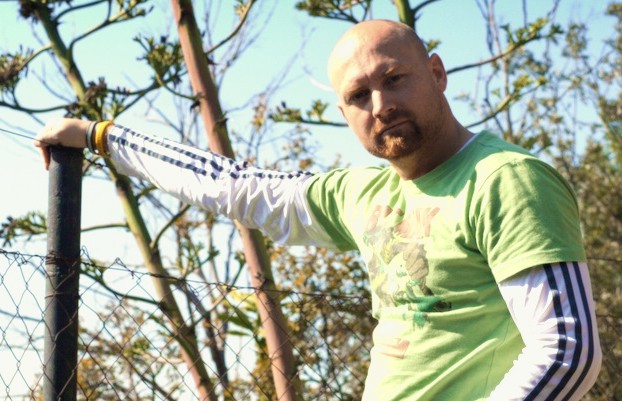
Although I studied law and economics, I left the corporate environment to freelance fulltime as a photographer and writer. My great grandfather was a famous South African artist, and my brother and aunt are also both well regarded artists [and yes, freelancers] in their own rights too. I guess there is something restless in my blood that makes we want to dig beneath the surface, to see expanded perspectives than what the media serves us.
I need to not only explore the world beyond my door, but represent it to myself and others in a constructive and meaningful way. I feel passionate about meaning above all, and it’s gratifying to find so much in so grim a setting where someone has lost their life. When we honour them, when we remember them honestly, something unexpected happens: we also set ourselves straight, we also get ourselves [and society to some extent] back on track.
In terms of the Amanda Knox case, I stepped into the bullring for the first time in April this year. I knew virtually nothing about the case other than it had been newsworthy around the world. I knew “˜something’ had happened in Italy, and that Amanda Knox was somehow involved [or not] because she was a housemate of a murdered British girl [also a student]. Before I started studying the case I had no bias either way ““ I didn’t know whether she was guilty or not. Based on the little media that came my way, there seemed to me to be equal parts bias that she was innocent and”¦suspicion.
As soon as I started examining the case, literally within a few minutes, my interest was aroused. It was along the lines of: she’s hiding something. It was also along the lines that I thought Amanda might be involved in some way, complicit in some way, but probably not involved in the actual murder. How could she? Why would she?
Again, it is easy to ask these questions and then walk away from them without investing time in their answers. And when they do come they’re”¦well”¦stupefying.

While Lisa travelled to Italy to investigate this case first-hand, I started working behind-the-scenes on a narrative Lisa and I designed a framework for called DOUBT. The plan was that Lisa would return and then we would work on the narrative together. I got so caught up in my own research I started on the narrative and by the time Lisa returned from Italy DOUBT was done. Interestingly, Lisa still wasn’t convinced of Amanda’s guilt when she got back, and we had one or two heated Skype calls while Lisa was still in Italy, where Lisa’s position was set to the default setting of most outsiders to the Amanda Knox case: “but there was no DNA.”
A lie repeated often enough eventually becomes if not the truth, then a kind of truism, doesn’t it? A truism isn’t the truth, it’s a platitude. It’s something you say to get rid of enquiring minds.
No DNA? Well, of course there is ““ at least five instances of it, mixed with Meredith’s blood. What’s perhaps more bizarre, for example, is the lack of Amanda’s fingerprints in her own home. A single print? How many of us could say the same about fingerprints in our own homes? Our computers, door handles, kitchen areas ought to be splattered with prints. Coming back to DNA, not only is Amanda’s DNA present, but so is Raffaele’s in Meredith’s bloody bedroom.
What is the chance that Raffaele was at the villa, in Meredith’s room, but not Amanda? What was he doing there if Amanda wasn’t with him? And is it any surprise that Meredith’s bra, cut with a knife after the murder also had Raffaele’s DNA on the bra clasp? This is a guy who had a knife fetish, and who was carrying a knife at the time of his arrest?
In DOUBT [which was banned at first by strident Pro Knoxers and then resurrected as DECEIT] I identified 28 Red Flags. These were singular signals that seem to show patterns of inconsistency. Things just didn’t add up. Indeed Amanda did seem to be [and still is?] hiding something. In DARK MATTER Lisa and I joined forces. We brought a binocular lazer-like narrative focus to the four days of intense police investigation following the discovery of Kercher’s body at midday November 2nd, 2007.
In DARK MATTER we identified an additional 100 plus Red Flags [we distinguished these from the first 28 by calling them “˜Black Asterisks’]. In addition to these we listed several other Highly Suspicious Events amongst other increasingly odd behaviours ““ not only from Amanda, but Raffaele as well. It is when we pool all of these clues together that a picture begins to emerge. Patterns emerge. And suddenly the mystery becomes”¦less mysterious.
If my initial “˜gut feel’ was that Amanda was simply “˜hiding something’, by the end of DECEIT there was little doubt that there was a lot more going on than that. In fact, I’ve suggested to Lisa that based on forensic evidence alone [if one threw away all the circumstantial evidence], Amanda would still a have a major case to answer to. Conversely, if one took the entirety of circumstantial evidence, including the on-again-off-again alibi, and simultaneously threw out [ie ignored] the totality of forensic evidence, Amanda would still have a major case to answer to. That’s my opinion. Lisa’s too, now that she’s gone beneath the surface of this case herself.
The irony is this case is so large, so convoluted, so filled with spin and counterspin, that it is easy to get lost in the details. As we see so often in court cases, it is not a lack of evidence that is a problem, it is the volume of it that gets disconcerting, and frequently confusing. Confusion and doubt [and “˜reasonable doubt’] go hand in hand. Of course being confused by a lot of information is not the same as uncertainty based on a lack of evidence, or based on ambiguous evidence. The evidence isn’t ambiguous.
As such it is Lisa’s and my mission to demystify the eight years culminating in Amanda’s and Raffaele’s ultimate acquittal. Our narratives, especially the first two or three in the series are probably better suited to newbies [people like us]. In THE IVORIAN, and the many narratives to come after that, Lisa and I expect to be as well versed as some folks on forums and resources like the incredibly valuable True Justice.org.
Before wrapping up, I’d like to share a final insight based on our experience writing another true crime series. It may seem like Amanda Knox, Jodi Arias and Oscar Pistorius are three distinct individuals, with nothing in common. But when we look closer we don’t simply see matches in certain defense schemes, we see entire patterns of conduct [including motive] overlapping, and doing so perfectly.
In South Africa we have a similar situation where the media profit out of stories on Oscar Pistorius. They are reluctant to declare him guilty as that would be slaying a potential “˜cash cow’, and with book deals hanging in the balance [an acquittal is literally worth millions], the media are hedging their bets.
As a person involved in the media I am appalled at this, hence our eight narratives on Oscar, two detailing his motive and the method of what we speculate was premeditated murder. In terms of Amanda Knox, we suspect a similar game play between the media and Knox. Both seem to be involved in a kind of PR waltz which both stand to benefit from, if they can dance consistently to their own music.
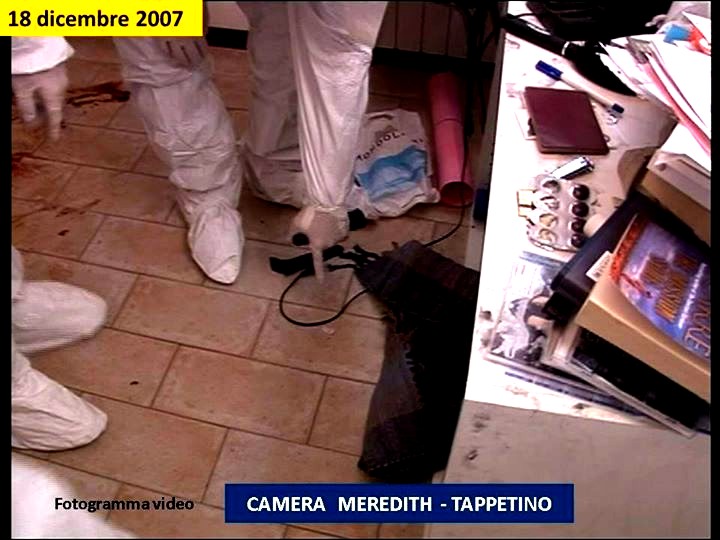
It was once said of Lance Armstrong that one shouldn’t make Lance Armstrong angry. Anger is what motivates Lance to win. And then the punch line: “˜Beating Lance makes him angry.’ Lisa and I have been astonished at the level of organisation and aggressive militancy [and dirty tricks] employed by Amanda’s supporters. If this was intended to dissuade us from writing, these folks couldn’t be more wrong.
We are not out to make money, Lisa and I, although we care that our narratives resonate and are successful. What we really care about is justice. The bottom line, whether one is a criminal, or the supporter of a criminal is you never look good trying to make someone else look bad. The venom and personal insults Lisa and I have endured in our reviews is impressive. The strategy is clear ““ attack the credibility of the messenger [since the message itself is problematic].
Our credibility is simple to establish. For my part, I am a professional writer. I did not gain a twitter following of almost 14 000 based on bad writing. I write in partnership with Lisa because her research is often deeper and even more thorough than mine. For me our credibility is based on just two tests: our personal standards and our level of honesty towards ourselves and others. What distinguishes our narratives from all the others out there is the level of honesty ““ including self disclosure ““ both of us bring to our work.
This is because we care about something beyond justice. Besides wanting our readers to have a meaningful and genuine experience reading about these tragic crimes, we ““ as authors ““ also want to be enriched. When we make it a personal journey, the insights and intuitions are truly rewarding. We find how these folks ““ not only the victim but also the perpetrators ““ are not so very different from us. In this sense, if when we genuinely learn something from these true stories, Meredith Kercher’s death need not be in vain.
Follow Nick van der Leek on twitter @HiRezLife and Lisa Wilson at @lisawJ13
Please “like’ Nick van der Leek’s Facebook page.
Friday, June 26, 2015
What No-Show Amanda Knox SHOULD Have Emailed Judge Nencini As Truthful Testimony in December 2013
Posted by Chimera
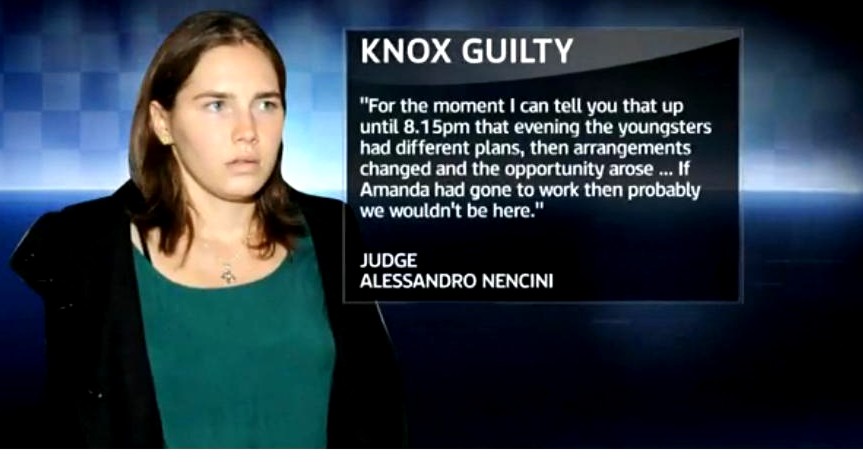
As the real thing really didnt work any better for Knox…
As is well known, Amanda Knox refused to attend her own appeal in Florence in 2013/2014.
This was a defence appeal by Knox herself and Sollecito against the 2009 conviction by Judge Giancarlo Massei’s trial court. It was not a new trial, or a retrial, or even a prosecution appeal. It was an appeal DEMANDED by Knox and Sollecito.
While Knox refused to attend, she did send a long, rambling email to Lead Judge Nencini. Judge Nencini tartly read out the email in court, and remarked that she could have delivered this in person and answered questions if she wanted it credibly on the record - after all, Sollecito was sitting right there and not scared out of his wits.
Kudos to fellow main posters Finn MacCool and SeekingUnderstanding for their original and well done posts on this ‘‘submission’‘
With a bit of fact checking, Knox’s email could have looked to the court and the media more like this. Enjoy.
Court of Appeals of Florence section II Assise Proc. Pen, 11113
Letter sent to attorneys Carlo Dalla Vedova and Luciano Ghirga via email Seattle, 15 December 2013
Attn: Honorable Court of Appeals of Florence
1. I have no doubt that my lawyers have explained and demonstrated the important facts of this case that prove my innocence and discredit the unjustified accusations of the prosecution and civil parties. I seek not to supplant their work; rather, even though I am not present to take part in this current phase of the judicial process, I feel compelled to share my own perspective as a six””year-long defendant and causation of Meredith’s injustice.
2. The Court has access to my previous declarations, and please disregard that whole ‘‘aggravated calunnia’’ in which Cassation says i framed Patrick to divert attention, or that pending calunnia charge claiming I falsely accused the police to sabotage the court proceedings. I trust you will not be blinded by these things to come to this verdict. I must repeat: I am innocent. Because repeating it will help dissuade you from studying my lies too carefully.
3. According to my lawyers: I am not a murderer, I am not a rapist, I am not a thief or a plotter or an instigator, at least not until Cassation signs off on it. I did not kill Meredith or take part in her murder or have any prior or special knowledge of what occurred that night, (other than screaming, slit throat, and that the body was moved). I was not there for part of the time, and had nothing to do with it.
4. I am not present in the courtroom because I am afraid. Frederico Martini is probably still pissed that I gave him up; the court and jail officials don’t like my book; and I think there is still an open warrant on me for calunnia. Also, without any employment or housing references, staying here may be tricky. I have faith in your judgement, but am worried you are so poor a judge you will be blinded my the Prosecution’s vehemence. I remember Judge Micheli: he was the wise Judge who found Guede guilty; he was the idiot Judge who ordered Raffaele and I to stand trial as accomplices.
5. My life being on the line, at least until I get parole, and having with others already suffered too much, I’ve rehearsed this story and attentively followed this process and gleaned the following facts that have emerged from the development of this case that I beg you not to dismiss when making your judgement:
6. No physical evidence places me in Meredith “˜s bedroom, the scene of the crime, because I define only that as the crime scene. My DNA mixed with Meredith’s was in the bathroom and Filomena’s room, not Meredith’s. Those bloody footprints cleaned away were in the hallway, not Meredith’s room. Raffaele had one knife, and this other was at his flat, neither of which is Meredith’s room. My lamp on Meredith’s floor had no fingerprints on it, and does not implicate me. That DNA on Merdith’s bra, and bloody footprint on the bathmat only implicates my alibi witness (who refuses to be questioned), not me. Those false alibis, false accusations, details I know about the crime, and phone records are not physical evidence, and did not happen in Meredith’s bedroom. Those ‘‘eyewitnesses’’ the Prosecution produced are not forensic evidence, and do not place me in Meredith’s room.
7. Meredith’s murderer left ample evidence of his presence in the brutal scenario, we made sure of that. Heck, the police couldn’t even find my fingerprints in my own bedroom.
8. No evidence places me in the same brutal scenario, again, which I restrict to Meredith’s bedroom, and only actual physical evidence. The prosecution has failed to explain how—with these restrictions—I could have participated in the aggression and murder””to have been the one to fatally wound Meredith””without leaving any genetic trace of myself. Just because i spend a lot of time talking about it, and am a C.S.I. fan, doesn’t mean I know how to remove evidence. That is because it is impossible. It is impossible to identify and destroy all genetic traces of myself in a crime scene and retain all genetic traces of another individual, or so C.S.I. has taught me. Either I was there, or I wasn’t. My analysis of the crime scene answers this question: I wasn’t there.
9. My interrogation was illegal and produced a false “confession” that demonstrated my non-knowledge of the crime- The subsequent memoriali, for which I was wrongfully found guilty of slander, did not further accuse but rather recanted that false “confession.” Yes, I wrote out a false ‘‘confession’’ that accuses someone else. Just as I testified to the prosecutor in prison and to my family members in prison when our conversations were being recorded without my knowledge. Dammit, give me some privacy.
10. My behavior after the discovery of the murder indicates my innocence, if you think creatively enough. I did not flee Italy when I had the chance, because (in my November 4th email), the police wouldn’t let me leave. I stayed in Perugia and was at the police’s beck and call trying to think of answers for over 50 hours in four days, convinced that I could help them find the murderer, or at least someone who was ‘‘close enough’‘. I never thought or imagined that repeatedly changing my story would fuel their suspicions. I did not hide myself or my feelings: when I needed sex, Rafael ‘‘embraced’’ me; when I was scared of being exposed, I cried; when I was angry that it wasn’t working, I swore and made insensitive remarks; when I was shocked, I paced or sat in silence, at least until I could find a new ‘‘best truth’‘; when I was trying to help, I evaded questions, consoled Meredith’s friends, especially her male friends, and tried to keep a positive attitude that this would blow over.
11. Upon entering the questura I had no understanding of my legal position, accompanying Raffaele to a witness summary session which I was not invited to. 20””years old and alone in a foreign country, I was, legally speaking, innocent and never expected to be suspected and subjugated to torture, and I wasn’t. I was told I was a witness, then after I placed myself at the crime scene I was told I was a suspect. I was questioned for a prolonged period in the middle of the night and in Italian, a language I barely knew, and that questioning includes the time I was sleeping or getting tea. I denied legal counsel- still The Court of Cassation deemed the interrogation and the statements produced from it was inadmissible. In my memoir, WTBH; I was lied to, yelled at, threatened, slapped twice on the back of the head. I told myself I had witnessed the murder and was suffering from amnesia. I told myself that if I didn’t succeed in ‘‘remembering’’ what happened to Meredith that night, I would never see my family again. I browbeat myself into confusion and despair, to sell to the media at a later date. When you berate, intimidate, lie to, threaten, confuse, and coerce someone in believing they are wrong, you are not going to find the truth, but again, that is not what happened here.
12. The police used tea and kindness to coerce me into signing a false “confession” that was without sense and should never have been considered a legitimate investigative lead. In this fragmentary and confused statement the police identified Patrick Lumumba as the murderer because we had exchanged text messages, the meaning of which I let the police wrongfully interpret (”˜Civediamo piu tardi. Buona serata’). The statement lacked a clear sequence of events, corroboration with any physical evidence, and fundamental information like: how and why the murder took place, if anyone else was present or involved, what happened afterward””it supplied partial, contradictory information and as the investigators would discover a little later, when Patrick Lumumba’s defense lawyer produced proof of him incontestable alibi, it was obviously inaccurate and unreliable. After over 50 hours of rehearsing the questioning over four days, I was mentally exhausted and I was confused.
13. This coerced and illegitimate statement, which I dreamed up, was used by the police to arrest and detain a clearly innocent man with an iron-clad alibi with whom I had a friendly professional relationship, (at least until I destroyed his life). This coerced and illegitimate statement was used to convict me of slander. Judge Hellmann saw that this statement was coerced, and threw out my calunnia conviction .... I mean he increased the sentence .... never mind.The prosecution and civil parties are accusing and blaming me, a result of their own overreaching.
14. Experience, case studies, and the law recognize that one may be coerced into giving a false"confession” because of torture. I’m not sure why this applies to my case, but damn, it sure sounds impressive.
15. This is a universal problem. According to the National Registry of Exoneration, in the United States 78% of wrongful murder convictions that are eventually overturned because of exonerating forensic evidence involved false “confessions.” Almost 8 in 10 wrongfully convicted persons were coerced by police into implicating themselves and others in murder. I am not alone: Susan Smith and Casey Anthony ‘‘falsely confessed’’ that other people did it too. And exonerating forensic evidence is often as simple as no trace of the wrongfully convicted person at the scene of the crime, but rather the genetic and forensic traces of a different guilty party””just like every piece of forensic evidence identifies not me, but Rudy Guide.
16. In the brief time Meredith and I were roommates and friends we never fought. Roommates, not friends.
17. Meredith was my friend, not that I was her friend. She was kind to me, helpful, generous, fun, and in retrospect, I should have been more of the same. She never criticized me. She never gave me so much as a dirty look, even as I left the place a mess, and even when I flirted with her boyfriend, or she took my job at the bar.
18. But the prosecution claims that a rift was created between Meredith and I because of cleanliness. This is a distortion of the facts. Please refer to the testimonies of my housemaster and Meredith’s British friends. None of them ever witnessed or heard about Meredith and I fighting, arguing, disliking each other. None of them ever claimed Meredith was a confrontational clean-freak, or I a confrontational slob. Laura Masotho testified that both Meredith and I only occasionally cleaned, whereas she and Filomena Romanelli were more concerned with cleanliness. Meredith’s British friends testified that Meredith had once told them that she felt a little uncomfortable about finding the right words to kindly talk tome, her new roommate, about cleanliness in the bathroom we shared. The prosecution would have you believe this is motivation for murder. But this is a terrifying distortion of the facts, as proving motive it not necessary—anywhere.
19. I did not carry around Rafael’s kitchen knife. That’s what men are for, to do the lifting for me.
20. This claim by the prosecution, crucial to their theory, is uncorroborated by any physical evidence or witness testimony. I didn’t fear the streets of Perugia and didn’t need to carry around with me a large, cumbersome weapon which would have ripped my cloth book bag to shreds. My book bag showed no signs of having carried a bloody weapon. The claim that he would have insisted I carry a large chef’s knife is not just senseless, but a disturbing indication of how willing the prosecution is to defy objectivity and reason in order to sustain a mistaken and disproven theory. Yes, i can positively disprove a theory I know nothing about.
21. It is yet another piece of invented “evidence”, another circumstance of theory fabricated to order, because having discovered nothing else, the prosecution could only invent: phone records, false alibis, false statements, false accusations.
22. I had no Contact with Rudy Guide, even though I mention in my book having seen him twice, and a third time in the next paragraph.
23. Like many youth in Perugia, I had once crossed paths with Rudy Guide. He played basketball with the young men who lived in the apartment below us. Meredith and I had been introduced to him together. Perhaps I had seen him amongst the swarms of students who crowded the Perugian streets and pubs in the evenings, but that was it. We didn’t have each other’s phone number, we didn’t meet in private, we weren’t acquaintances. I never bought drugs from Rudy Guide or anyone else. I was having sex with Federico for drugs, which isn’t the same thing. The phone records show no connection. There are no witnesses who place us together, except my statement here. The prosecution claims I convinced Rudy Guide to commit rape and murder, completely ignoring the fact that we didn’t even speak the same language. He has lived in Perguia for 15 years, and I am a student of Italian. Once again, the prosecution is relying upon a disturbing and unacceptable pattern of distortion of the objective evidence.
24. I am not a psychopath. That evaluation in 2008 was unfair, as I didn’t get a chance to prepare my spontaneous answers.
25. There is no short list to the malicious and unfounded slanders I have enjoyed over the course of this legal process. In trial, in the media I have been called no less than:
“Conniving; manipulating; man””eater; narcissist; enchantress; duplicitous; adulterer; drug addict; an explosive mix of drugs, sex, and alcohol; dirty; witch; murderer; slanderer; demon; depraved; imposter; promiscuous; succubus; evil; dead inside; pervert; dissolute; a wolf in sheep’s clothing; rapist; thief; reeking of sex; Judas; she-devil;
26. I have never demonstrated anti-social, aggressive, violent, or behavior. Throwing rocks at cars, writing rape stories, and staging break ins are not violent or anti-social. I am not addicted to sex or drugs. In fact, Federico Martini hasn’t given me any since I was arrested. Upon my arrest I was tested for drugs and the results were negative. I am not a split-personality One does not adopt behavior spontaneously.
27. This is a fantasy. This is uncorroborated by any objective evidence or testimony. The prosecution and civil parties created and pursued this character assassination because they have nothing else to show you. They have neither proof, nor logic, nor the facts on their side. They only have their ‘‘evidence’’ against me, and my personal opinions about them. They want you to think I’m a monster because I am telling you they think I am a monster. it is easy to condemn a monster. It is easy to dismiss a monster’s defense as deception. But the prosecution and civil parties think I’m both severely mistaken and wrong. I have condemned them without proof of wrongdoing, and I seek to convince you to condemn them without proof of wrongdoing.
28. If the prosecution truly had a case against me, there would be no need for these theatrics. Never mind that this is my own appeal, and I ‘‘should’’ be demonstrating why the 2009 trial verdict is unjust. If I had a case, there would be no need for smoke and mirrors to distract you from the mountains of physical evidence against me. But because this evidence exists that proves my guilt, I would seek to deceive you with these impassioned, but completely inaccurate and unjustified pronouncements. Because I am not a murderer (yet), I would seek to mislead you into convicting me by charging your emotions, by painting me as an innocent until proven guilty, but not as a monster.
29. The prosecution and civil parties are committing injustices against the Kerchers because they cannot bring themselves to admit, even to themselves, that they’ve made a terrible mistake, namely, that the murder was premeditated. Again, it is my own appeal, but they are persecuting me.
30. The Court has seen that the prosecution and civil parties will not hear criticism of their mistakes, by people who won’t attend their appeal.
31. The Court has seen that the prosecution jumped to conclusions at the very start of their investigation: they interrogated and arrested innocent people and claimed “Case Closed"before any evidence could be analyzed, before bothering to check alibis. As proof of this, they called Raffaele to the police station (at his leisure), to clear up discrepencies in his alibi. Then when he claimed I lied, Rita Ficarra then asked me for an explanation. Those brutes! Then they hauled in Patrick just because in ‘‘confessed’’ several times that he did it.
32. The prosecutor and investigators were under tremendous pressure to solve the mystery of what happened to Meredith as soon as possible. The local and International media was breathing down the necks of these detectives. Their reputations and careers were to be made or broken. In spite of that, they still saw my mistakes. Under pressure, they admitted to as few mistakes as possible and committed themselves to a theory founded upon disproving my mistakes.
33. Had they not jumped to conclusions based on nothing but Raffaele’s changing alibi and my false accusations, they would have discovered definitive and undeniable evidence of not Patrick Lumumba, but of Rudy Guede, Raffaele Sollecito, and Amanda Knox. We would not be here over six years later debating clues my lawyers claim are inconclusive and unreliable. Had we plead guilty we would have been spared the cost, anguish and suffering, not only of Raffaele’s and my family, but especially of Meredith’s family as well.
34. My accusations are unworthy of judicial or public confidence. In over six years I have failed to provide a consistent, evidence-driven, corroborated theory of the crime, but would nevertheless argue that you should not take my life away. I beg you to see through the ‘‘facts’’ and ‘‘reason’’ of what I say. I am innocent. Raffaele is innocent. Meredith and her family deserve the ‘‘truth’‘. Please put an end to this great and prolonged injustice for them.
in faith,
Amanda Marie Knox
Sunday, February 15, 2015
Journalist Andrea Vogt Highlights Non-Damning Nature Of Rome Embassy Cables About Knox
Posted by Peter Quennell

Ambassador to Italy David Thorne with Secretary of State John Kerry
1. US Freedom Of Official Information And Politics
Since 1967 the US Federal Government has had to provide certain official information to requesting citizens and organizations.
Most of those are watchdog groups and reporters. The relevant rules are quite elaborate, and can be read here and here.
About half of all information requested is handed over fully, about 3/8 is handed over with excisions and withholdings, and about 1/8 is not handed over at all, with summary reasons for the refusal. This can then be appealed or alternately brought to the attention of someone in Congress.
If a powerful congressman or committee staffer picks up the ball then the information can flow quite magically.
If the information can embarrass the presidential administration the other party can gleefully extract the information, if necessary with the issuing of a subpoena. The news media will usually pick this up and run with it, especially if a Congressional committee decides to ask questions or hold hearings.
We reckon that our readership and the case-watchers in general extend right across the political spectrum from left to right. No easy trick and we have always been quite pleased with this. It is usually impossible to tell what the political position of any poster or emailer is.
Same with the US media. Fox News cable news is generally thought to be right-wing and MSNBC left-wing and CNN tries to make it in the middle. But all three have had left-wingers and right-wingers on their shows supporting either Italy and justice or the anti-justice anti-Italy misinformation Knox campaign.
In other words support by Americans for Italian justice or for giving Knox a pass has had nothing to do with party lines. But that could change some.
Right now the presidential administration is on its back foot, as the other party controls both the houses of Congress. The Secretary of State and the Ambassador in Rome both work for the administration, and can be called to account by that Congress.
Knox happens to live in a city and state which largely goes along with the presidential party and administration. Senator Patty Murray and Senator Maria Cantwell are in the presidential party as is Mayor Ed Murray of Seattle.
Senator Cantwell is STILL the only influential politician who has taken a public stance anti-Italy; nobody from the opposite party ever has.
In 2009 Cantwell was sharply rebuffed and her facts corrected by the State Department and CNN’s legal analyst and even by some pro-justice Seattle voters..
In October 2013 Cantwell flashed in and out of a bizarre misinformation panel perhaps embarrassed to be associated with it.
Bottom line? The presidential administration and party does not seem in a strong position to refuse to hand over any documents, or without very strong reason to take a pro-Knox anti-Italy position.
We are not guaranteeing that this case will become a political football. But it could. If it does, the Knox gang will have only weak political allies (if any) and what the Rome Embassy reported to the State Department 2007-2015 is really going to matter.
How does all this relate to what Andrea Vogt has recently encountered?
2. Andrea Vogt And The Cables From The Rome Embassy
Andrea Vogt in effect holds a giant lever. She has long pursued her right as an American journalist to surface what the consular officers in the Rome Embassy who watchdogged the 2009 trial and 2011 and 2013 appeals and Knox’s stint in prison had been reporting back to the State Department in Washington.
Releases of copies of cables in 2010 showed “no cause for concern” over Knox’s treatment and copies of cables in 2011 showed likewise.
There was zero official paper trail helpful to a Knox fight against extradition. That was despite a very nasty effort by Knox forces to lean on the Embassy and the State Department by complaining directly to President Obama.
Now Andrea Vogt is reporting on the Freelance Desk in “Update Feb 13 2015” on her experience with a new batch of cables.
Oddities to our eyes are that (1) in this batch, some requested cables were not released; and (2) a cable in October 2011 at the end of the Hellmann appeal wrongly declared “case closed”.
Passages of special interest have been highlighted here by us.
Many may view the cables as just routine bureaucracy, which in large part they are, but I believe they are important documents to add to the public record for two reasons.
First, they show insight into how American citizens in trouble abroad are supported (or not, depending on your viewpoint) by their government.
Second, they contribute transparently to the established written government record, clarifying diplomatic aspects of the case that until now have remained hidden while the saga played out solely in Italian courtrooms and the media.
The results of this second batch of FOIA requests were of particular importance due to the grave accusations being launched against the Italian police and members of its judiciary by members of Knox’s family, supporters and public relations team during the period of her incarceration.
The question at hand: was Amanda Knox abused, mistreated or robbed of a fair trail in Italy? How closely was the state department monitoring the case and what did embassy officials do, or not do, as it evolved?
The answer, first revealed in this first batch of embassy cables released to me in 2012 and dating back from 2007-2009, is that embassy and state department personnel actively monitored the case and provided aid from the very first days after her arrest. Other state and federal documents that I published back in 2010 ... show how Washington State’s congressional delegation, namely Sen. Maria Cantwell, was also involved.
This second batch of FOIA-requested embassy cables was released to me in late 2014 in response to another more extensive FOIA request made in 2012 (a two-year lag time is not unusual for broad requests)...
In brief, these new cables shows that the trend of close state department monitoring of the case was constant, with consular involvement up until the day (Oct 11, 2011) that the U.S. Ambassador Thorne in Rome sent a cable to the secretary of state in Washington D.C., officially declaring the matter “case closed.”
The communications are noteworthy because they bust a number of media myths about Amanda Knox’s release and immediate departure from Italy after her release in 2011, namely that the U.S. embassy did not receive her in the hours immediately post release for consular services, as she was traveling on a valid U.S. passport.
The other interesting point is that though the case was far from over in Italy, once Amanda Knox was off Italian soil, it no longer considered the case to be of interest. “With the verdict of Oct. 3 overturning Amanda Knox’s prior conviction, her immediate release from prison and her subsequent departure from Italy today, Post considers this case closed. THORNE.”
For American citizens abroad, it is a welcome reminder that the embassy works on citizens’ behalf, as are the four documents released with excisions that show Knox was regularly visited by consular officials every six weeks and brought reading materials.
It is worth noting that the only persons to publicly report to have regularly visited Knox in prison to bring her reading materials were those associated with the Fondazione Italia USA, namely Italian parliamentarian Rocco Girlanda and Corrado Maria Daclon, the two men also present with her in the car that drove Knox out of prison the night she was acquitted.
Coincidence or are these the consular visits the cables refer to?
As soon as Knox was out of the country, the embassy declared “case closed,” perhaps not expecting that her trials would continue. Those who have followed the case know that the acquittal that prompted her release was later annulled in its entirety by Italy’s Supreme Court, which called for a second appeal trial to be held in a separate venue: Florence….
For the British and Italian authorities, and family members of Meredith Kercher who have patiently waited out the Italian legal system, perhaps the “case closed” cable jumped the gun. Once an American citizen is out of the country where he or she is in trouble, what duty does the embassy have to keep following legal developments that involve an American not physically in the country?
Did the embassy re-open the case later once the Supreme Court quashed the acquittal or is it “out of sight, out of mind,” and once an American in trouble abroad is no longer abroad, the embassy in that country can effectively wash its hands of the matter? Is it still considered “Case Closed”?
As the possibility of an extradition process hangs in the balance with the upcoming March 25 supreme court decision, the documents may provide some additional material for legal scholars to consider.
As the State Department letter points out, there are still 11 documents that fall under the umbrella of my initial FOIA request that have not been released that require further coordination.
Based on the content of my 2012 request, I believe these may be documents relating to then Sen. John Kerry and the U.S. Committee on Foreign Relations, of which he was chairman from 2009-2013 [ed note: and Senator Cantwell was a committee member] and to which specific FOIA requests were made, and for which I have not yet received response.
I have scanned and uploaded the 2-page FOIA response and 5 released cables (Oct 2011, June 2011, March 2011, November 2010, September 2010) below…
Andrea Vogt included images of those six seemingly mundane documents she received below the report, praises the Embassy and State, and voices no suspicions.
Amazingly, not one other American reporter has pursued this obvious angle. Still, in a political fuss, all those many others described in Part 1 above could also choose to do so.
Tuesday, July 29, 2014
Italian Reporting Of Prolonged Knox/Cocaine-Dealer Connection; Media Digging
Posted by Our Main Posters
1. How Drug Use Was Addressed At Trial
The story of Knox’s drug use clearly has legs. But whoever is driving it, the trial prosecution is not - they are simply sitting back and watching.
Police and prosecutors have never driven the perception that Knox and Sollecito were stoned on the night when they attacked Meredith. Judge Micheli wasnt keen on this possible “out” and besides they have never had a reason to.
It was in fact the defenses who drove the drug-use argument. Knox admitted to police on 5-6 November 2007 to marijuana use, and so did Sollecito. He already had a minor record of cocaine possession. Both tried to use the argument at trial that they were indeed stoned. But that was only to explain major discrepancies in their statements, not to say that drugs helped to fuel the attack on Meredith.
The defenses had an opportunity with Judge Matteini, the guiding magistrate from late 2007 though to Judge Micheli’s arraignment in October 2008, to try to seek lesser charges due to impaired capacities. But either they did not want to, or they were prevented by the families from doing so.
At trial in 2009 the prosecution remarked that the two were suspected to have been using cocaine (the symptoms seem to us pretty obvious) but the defence simply shrugged at this and did not contend it.
Judge Massei never mentions amphetamines. Two defense experts were brought in to try to convince the Massei court that the admitted drug use had fogged their clients’ brains. Judge Massei simply recorded this doubtful claim in his sentencing report. He gave the perps no breaks based on this reasoning.
]page 393] On the effects of drugs of the type used by Amanda and by Raffaele, such as hashish and marijuana, [we] heard the testimony of Professor Taglialatela who, while underlining the great subjective variability (page 211, hearing of 17 July 2009) specified that the use of such substances has a negative influence on the cognitive capacity and causes alterations of perception (pages 201 and 207) and of the capacity to comprehend a situation (page 218).
In his turn, Professor Cingolani, who together with Professor Umani Ronchi and Professor Aprile, had also dealt with the toxicological aspect (see witness report lodged on 15 April 2008, pages 26 and following), responding to the question he had been asked as to whether the use of drugs lowers inhibitions replied: “šThat is beyond doubt”› (page 163 hearing of 19 September 2009), while correlating that effect to the habits of the person [on] taking the drugs. Raffaele Sollecito’s friends had furthermore stated that such substances had an effect of relaxation and stupor.
2. New Reporting On Knox/Drug-Dealer Connection
Below is the new Giallo report on a connection between Knox and drug-dealers kindly translated by our main poster Jools. Note that the main drug dealer Frederico Martini (who is “F” below) and others were convicted back in 2011 and the connection to Knox was reported then in the Italian press, though not in the UK and US press.
The main new fact here is that Giallo has the dealers’ names. Giallo makes clear it obtained the names legitimately from open police records, not from the prosecutors back at trial. Dr Mignini merely takes note of the names which Giallo itself provided and he doubted that Knox would now become truth-prone.
Clamorous [Sensational/Scoop]
The American woman already convicted to 28 years for the murder of her friend Meredith.
A NEW LEAD, LINKED TO DRUGS, PUTS AMANDA KNOX IN TROUBLE
The woman was hanging around a circle of hashish and cocaine traffickers. One of them had intimate relation with her. Another, a dangerous criminal offender, had attempted to kill his brother with a knife. Are they implicated?
“During the course of the investigation into the murder of Meredith Kercher we have confirmed that a person whose initial is F. would occasionally supply drugs to Amanda Knox, as well as having a relationship with her supposedly of a sexual nature.” So begins an [official note] annotation of the Flying Squad police in Perugia dated January 19, 2008, two and half months after the terrible murder of the young British student Meredith Kercher. An annotation that could open a new, worst-case scenario on the Perugia murder and on one of its most talked-about protagonists, Amanda Knox, besides making it possible to convince the USA to send her back to Italy for a new trial.
But why is this annotation so important? And who is this mysterious F. that is now entering the scene? Let’s see. When Amanda came to our country to study, in September 2007, did not yet know Raffaele Sollecito, the guy from Giovinazzo who will be accused together with her and Rudy Guede, a thief and drug dealer, of the murder of Meredith. But she soon started to hang around characters implicated in a drug ring for university students in Perugia. A particularly disturbing entourage of whose members included dangerous multi-convicted felons. The first one is precisely F. We will not disclose his full name or F’s last name, for reasons of discretion, but GIALLO knows them.
In 2007, F. is a student of psychology from Rome, much older than Amanda. The two meet on a Milano-Florence train and decide to visit the city together in the evening, Knox having gotten rid of [her sister] she and F. smoke a joint together. “My first smoke in Italy,” says the same Amanda on MySpace, a social network site that was popular seven years ago. The two end the Florentine evening in his hotel room. Photo evidence of this new friendship was formerly on Myspace, because Amanda publishes a photo of F., half naked. An aunt commented: “Do not date strange Italian guys.”
Once she settled in Perugia, Amanda continues to have contact with F. His number is in Amanda’s phone book, and they both frequently called each other, before and after the murder.
F., also appears in a “list” of Italian guys she slept with which was compiled by Amanda on one of her big school notebooks and also in her autobiographical book Waiting to be heard. In the book Amanda talks about F. but changes his name and calls him Cristiano. Maybe to protect their privacy, maybe to obfuscate opinions. She writes of him: “I promised my friends that I would not end up sleeping with the first guy that comes by, but F. was a change of plans.” Further adding that in Italy smoking joints is simply normal, “like eating a plate of pasta.”
On the other hand Amanda spends a lot of money in the several months she’s in Perugia. In September, she draws out $ 2,452 from her bank account, that’s 1,691 euros. How did she spend it? No one has ever investigated this, and she does not explain it. She says she used the cash for living [expenses], but considering that the rent she had to pay was only 300 euros, and that twice a week she worked as a waitress in the bar of Patrick Lumumba, Le Chic, putting more cash in her pocket, the [living] expenses seem really excessive.
What does Amanda do with all that money? For sure she does not buy only hashish, which is not so expensive. Was she, then, using cocaine? The [police] annotation makes you think of it. And this could explain both the state of alteration of the girl on the night of the murder as well as a possible motive. Amanda that evening returned home to get some money to pay for the drugs, and she encountered Meredith? The girls had a fight, as Rudy Guede says in his reconstruction of that night, why, did Amanda steal Meredith’s money? Was Amanda on her own, or maybe she made sure she was accompanied by Rudy or other drug dealing friends?
No one has ever investigated this, or Amanda’s dangerous acquaintances. So dangerous that the same F., in 2011, was arrested. To be precise that started from the analysis of Amanda’s mobile phone, police investigators found that in fact F. and two of his close friends, Luciano and Lorenzo, were part of a major drug ring: all three ended up on trial for selling cocaine.
On January 14, 2011 they were all sentenced. The court judges established that Luciano was the one that supplied the other two: He was to serve two years and eight months in prison.
But let’s read the rest of the police annotation because what this reveals is really disturbing: “F. is contacted by phone by the presumable clients placing an “order” with him of the quantity of drugs they want to buy and in turn he contacts various Maghrebi characters ordering. It is also established that F. associates with multiple-convicted offenders of very serious crimes in the matter of drugs, and with persons such as A. Luciano, with whom he maintains frequent contacts aimed at drug trafficking.”
And precisely in this way Luciano, linked to F., a friend of Amanda, has a terrible past. The cops wrote this about him: “The above-cited Luciano on the 28/7/2006 was arrested by the carabinieri in Foligno because he was responsible for the murder attempt of his brother, who gave him 16 stab wounds inflicted with a kitchen knife.”
Luciano, therefore, who sells drugs in Perugia and provides supply to F., with whom he is often in touch, is an unsuccessful killer. Only a year before the murder in Perugia, under the influence of drugs, he tried to kill his brother during an argument over money and drug dealing. Luciano, out of his head that evening, grabbed the knife with which he was slicing a melon in the kitchen and stabbed his brother’s body 16 times.
A scene not so different from what the judges think happened in Meredith’s house, and even from what was described by the same Amanda on the 5 November 2007 when, at the end of a night of contradictions and anguish, confessed giving culpability of the murder to Patrick Lumumba, the owner of the bar Le Chic, who later proved to be unconnected with the facts of the case. Amanda said: “Patrick and Meredith went to Meredith’s room, while I think that I stayed in the kitchen. I heard screams and was scared, I covered my ears.”
Where were, F. and Luciano the night of the murder? And who was there that night, instead of Patrick? Questions still unanswered. What seems likely, however, is that Amanda was not with Raffaele, who was at his home on his computer. The judiciary may now decide to open a new file on her. Will the USA grant extradition?
Here is the translation of Dr Mignini’s interview with Giallo translated by Kristeva.
Luciano [Giuliano] Mignini, the judge leading the investigation, talks “Amanda knows how to lie very well: she seems sincere and credible ...”
[GM] The magistrate has directed all investigations: it is she [Judge Matteini] who had Amanda, Raffaele, Patrick Lumumba and Rudy Guede arrested.
[GM] “In the Supreme Court of Cassation new revelations don’t count” Giuliano Mignini, deputy prosecutor of the Attorney General Office of Perugia and public prosecutor of the first trial for the murder of Meredith [Kercher], goes straight to the point.
Mr. Mignini, pending the Supreme Court, Raffaele Sollecito seems to have distanced himself from Amanda Knox. He claims he is not certain that the American girl has spent the whole night with Sollecito ...”
[GM] “All this is irrelevant. In Court of Cassation only questions of laws can be raised. They do not take into account the new elements of reconstruction of the facts. Trials are based on the acts of the proceeding. Sustaining now a different reconstruction of what happened is a question of merit that does not in any way interest cassation.”
Amanda has repeatedly argued that her version of the facts had been affected by heavy pressures from the prosecutor’s office.
[GM] “Nothing could be more false. The process of investigation and trial proceeding of Kercher’s murder has had from the beginning an unprecedented media pressure, which has confused some ideas in public opinion. The trial should take place with the guarantee of an adversarial process, with equality of prosecution and defense. When one steps out of these parameters one ends up with a trial through the media. In this scenario, the foreign press, especially the American one, not taking into account our legal system, has given its input. They created a discourse that sounds a bit like this:she is one our fellow citizens and therefore she must be innocent. “
And if today even Amanda was to change her version?
[GM] “I would be astonished. She had plenty of occasions to tell her truth”
What was your impression of Amanda?
[GM] Amanda is very intelligent. She cleverly tried to divert suspects from her, as in the case of the staged burglary, a huge lie. Amanda is shrewd like when she accused Patrick Lumumba. On that occasion she appeared credible, she was crying. She looked as if terrified. I believe she’s a very theatrical girl and in a certain way even anti conformist: while everyone was crying and were worried, she was doing cartwheels.
What was her relationship with Meredith?
[GM] “Amanda did not like to be contradicted and had a conflictual relationship with Meredith. There were constant arguments regarding Amanda’s behaviour that Meredith could not tolerate. She believed that Amanda stole her money.”
And what type was Sollecito?
[GM] Raffaele is an enigmatic character. He is a shy young man who was subjected to Amanda’s strong personality. He was very attracted to Knox who in the meantime did not disdain the company of other acquaintances.
About acquaintances, Amanda knew some drug dealers. Could they have had a role in the murder?
[GM] “I cannot answer this” But then writes down their names.
[By] Gian Pietro Fiore
3. Our Comments On The Giallo Report
As observed above, for Italians most of this is actually not new news. The new news is that Giallo now has all the dealers’ names, from the open records of the police.
Giallo’s mention of a possible new trial is presumably connected to this drug-dealing, as the trial for Meredith’s murder and Knox’s and Sollecito’s failed appeal have both concluded, and only Cassation’s endorsement of the verdict is awaited.
Giallo’s references to Guede as a drug dealer and thief are both unproven. He had no criminal record prior to final conviction by Cassation. He was never a police source, and got zero breaks, ever. He was unknown to Dr Mignini until some days after Meredith was attacked and forensics identified him.
4. UK and US Media Get Key Fact Wrong
The UK’s Daily Mail has wrongly claimed that Italy’s Giallo magazine had reported as follows: “Italian prosecutor from Amanda Knox trial gave newspaper list of drug-dealer names associated with American student”.
In their headlines the US’s National Enquirer and Radar Online make the same wrong claim, though they quote enough from Giallo to show how that magazine really re-surfaced the report.
So for now UK and US media get that key fact wrong. This surely wont be the end of it though. The story finally has legs of its own, and clearly the media in all three countries have a willingness to pursue it more.
In the interview also posted on Giallo Dr Mignini doubted that even now Knox will tell the truth - in fact it is hard to see what she can say. We will wait and see.
5. Ground Report Also Gets It Wrong
This shrill report from “Grace Moore” about Guede and Dr Mignini in Ground Report is both seriously wrong on the facts and defamatory - she should try saying that sort of thing about any American prosecutor. “Grace Moore” should find out what the roles of Judge Matteini and Prosecutor Comodi were, and why after a malicious prosecution against him Prosecutor Mignini is riding high on Italian TV - and pouring cold water on satanic claims about any crimes.
Paul and Rachel Sterne, the father and daughter owners of Ground Report which carries well over 100 similarly inflammatory posts, could in theory be charged by both Italian and American prosecutors, as they are an eager party to bloodmoney (a felony), harrassment of the victim’s family (a felony) and obstruction of justice under Italian law for poisoning opinion out of court (another felony).
They need to clean up their site and make some amends.
This drug report continues with new developments in another post here.
Wednesday, February 19, 2014
Our Reviews Of The Painstaking BBC-3 Report First Aired In The UK On 17 February 2014
Posted by Our Main Posters
Review by SomeAlibi
Watching “Is Amanda Knox Guilty” was a funny thing. I suspect for people following the case closely, on either side, it was a sobering experience. Not because it changed perspectives, but simply to see how quickly one hour passed and the necessary trade offs that had to be made to fit within that schedule. The opportunity cost was a level of detail to which in-depth followers have become accustomed.
Just one example: Sollecito and Knox’s partial alibi that they were checking their emails on the night of November 1st was explained as being challenged by two broken computers. Perhaps, (although unlikely to be the material issue) but where was the much more salient fact that their ISP records showed that was conclusively untrue? Where was the challenge: if you say you’re checking emails to establish part of your alibi against a murder and it is shown to be absolutely untrue, what does that suggest…?
There were many other “clinchers” that had to be let go in the name of brevity. But it wasn’t that sort of documentary - it was neither a case for the prosecution or a case for the defence: it put the main suggestions at the level of detail that was possible and it allowed both sides to speak to the points at that level of detail.
I find it interesting that there has been such a howl of bias from those supporting Knox and Sollecito. Objectively there’s no good ground for it: the documentary allowed both sides forward in equal measure and no pro-justice watcher would celebrate it as a pro-conviction piece.
The arguments were balanced, the video, audio and picture quality eye-opening. For those on the other side, their markedly different reaction appears to be that the documentary has broken the taboo that The Evidence Shall Not be Told. The idea that there is an easy-to-consume piece that puts forth the case and defence equally is seen as a disaster.
The campaign for Knox continues to be obsessed, beyond all things, with trying but now failing to make sure the public doesn’t know the basis of the case. For a long time they hoped to drown out the multitude of terribly inconvenient truths within it by screaming “no evidence”. ‘Is Amanda Knox Guilty’ put the lie to that conclusively, but fairly, and now many hundreds of thousands, perhaps soon to be millions will ask themselves why those supporting Knox and Sollecito have had to adopt this tactic at all.
If they really are innocent, why has the case against them been so comprehensively white-washed in the US?
The conclusion, is rather simple and I saw it encapsulated on a large television screen last night with the repeated clips of Amanda Knox and Raffaele Sollecito outside the cottage kissing and “comforting” each other: there for a fraction of a second, shown several times, is Amanda Knox, unable to stop herself glancing at the camera filming her and stealing her gaze away again very quickly pretending she hasn’t.
It’s a look that says everything: furtive, pretending it didn’t happen, immediately covering up in a way that poses a stark proposition: why on earth would you do that if you had nothing to hide? And like so much of the multiple collapsing alibis and non-working answers and the desperately dishonest fingers-in-the-ear “no-evidence” pretence of those supporting her, is a proposition that can withstand no scrutiny.
Review by SeekingUnderstanding
What a relief to watch a very clear and unbiased narrative. The quality of the visual information was top rate - seeing so much original footage, and presented as it was in a logical time sequence.
Even though I was already familiar with the evidence, including the photographic material, I found it very helpful to see it all presented in this way. I appreciated, too, hearing and seeing the excerpts in original Italian (along with English translations). It added even more authenticity.
I hope that, at long last, this will have helped some - or hopefully many- people to see that the two ‘camps’ in this case do not divide into AK supporters and AK ‘haters’. There are the FoA and their followers ...and there are the others who seek the objective truth and justice.
If hate has been generated in some quarters, then the Knox (and Sollecito) camps need to look to themselves and their own behaviour. This programme was important in the tone it set.
I actually found it to be quite lenient towards the defence on a number of counts.
There were several instances where the defence point of view could have been strongly countered by known and established facts, but, bending over in fairness, these were left unanswered.
Here are just four instances :
1) In the discussion around the blood and DNA left in the bathroom - Dr. Gino’s assertion that ‘the blood/DNA ‘could have come from anywhere’ might have been countered with AK’s own declaration that the bathroom was previously clean. Dr. Gino also suggested a very improbable scenario of ‘it could be saliva’ (on the bidet?). Cassation emphatically said that it must be shown HOW any suggested contamination could have occurred.
2) There was a missed opportunity in discussing the knife presumed to be the murder weapon to mention Sollecito’s lame, unreal excuse of ‘Meredith pricked her hand’ etc.
3) Anne Bremner stated ‘Amanda could not have turned overnight…into a murderer’. Attention could have been drawn to many things, both physical events (her predilection for cruel pranks, including a staged burglary in the US, and wild parties, etc), and also many psychological indicators that would have clearly shown how her behaviour has, in fact, demonstrated consistency.
4) In the discussion re the bra clasp, the delay partially being caused by the defence themselves was not mentioned. Also, detailed discussion re the one bare footprint on the bathmat was omitted.
Since there is, in fact, so much evidence, it must have been difficult to chose and balance what did go into the hour long programme. All in all, I feel Andrea Vogt and her team worked hard, and did very well to let the facts speak for themselves.
I hope it will lay a few fictions and myths to rest.
Review by Earthling
What is the “Amanda Knox trial” (really the Meredith Kercher murder trial) really about? Is it about an innocent 20-year-old pretty white girl being railroaded by the medieval Italian justice system?
Or is this actually a murder trial, about the fact that a beautiful, intelligent, ambitious young woman, innocently trying to improve her life by study abroad, was brutally murdered?
I believe it’s the latter, and the BBC3 production gives us one of the first truly balanced reports on this trial.
The filmmaker starts from the beginning, and takes us through the murder, investigation, and various trials and appeals up to the present day. Instead of the breathless “Perils of Penelope” tone (toward Amanda Knox) that most such previous “documentaries” have taken, this one takes a sober look at the actual evidence.
Did you realize that there are luminol-revealed bare footprints in Knox’s size in the apartment? Luminol reveals blood and a few other substances; but those substances can be ruled out because the test was done six weeks after the murder, by which time those substances would have dissipated.
Blood doesn’t dissipate. This documentary shows you those bloody footprints in all their creepy glory, something never shown on American TV before.
“Is Amanda Knox Guilty” also speaks of the actual DNA evidence in the cottage linking Knox to the murder, including five mixed-DNA spots (Knox and Kercher) that tested positive for blood. Both prosecution- and defense-oriented experts are allowed to comment on this evidence, and the viewer is allowed to make up his or her own mind.
My one criticism is that a lot of the evidence against Knox (witness statements, cell phone data, fake break-in) is skimmed over or not even mentioned. Also, because the documentary quotes Rudy Guede’s position at length without any contradictory narrative, it is confusing as to whether the filmmaker might have believed him.
In the end, the filmmaker says, he was convicted of participating in the group murder. However, a stronger statement against his “I’m entirely innocent” defense would have been good.
Other than these quibbles, this is the best documentary on the Meredith Kercher murder case that I have ever seen.
Review by ZiaK
I watched the BBC programme on the Meredith Kercher case hoping for a more balanced view of the case than has been presented in the English-speaking media to date.
The documentary does present some of the evidence against Knox and Sollecito - including the bloody footprints, the mixed blood/DNA traces in the bathroom and corridor, the bra clasp, the knife DNA evidence, the strange timings of phone calls to police, the unlikelihood of the “break-in” being anything other than staged - but omits to point out that none of the other flatmates’ DNA was found in the blood traces, so saying that “it’s because Meredith and Amanda shared a flat” is misleading.
Nor does it point out that, although the murder knife was found in Sollecito’s flat, none of HIS DNA was found on it: it had only Amanda’s and Meredith’s DNA.
The programme didn’t cover the cell-phone evidence, showing that neither Knox nor Sollecito were where they said they were, at the times that they claimed. The programme also repeated the “Friends of Amanda” PR soundbites, such as “there was no evidence of Amanda in the murder room” - whereas the fact that her footsteps tracked blood OUT of the room are actually evidence of her having been present IN the room before it was locked (i.e. at the time of the murder).
Furthermore, in my opinion, the narrator’s voice seemed to evince sympathy towards Amanda, rather than describing events with a passive or objective tone of voice.
As one of the translators who has participated in translating case documents (such as the judges’ reports describing why they came to their decisions), I am only too aware of the extent of evidence against Knox and Sollecito, and I would like to see knowledge of this evidence become more widespread throughout the English-speaking world.
The BBC programme is a step towards this, but in my mind, only a very small step. I hope the pace will pick up soon, and more objective and extensive knowledge of the true facts of this case will be made available to everyone so they can form a rational opinion of the case based on true understanding.
Review by Cynthia
I’ve just watched this, and it’s very good - with a huge amount of footage hitherto unseen (directed by Andrea Vogt).
For what it’s worth, I note the following points:
1) There’s no mention of Meredith’s friends who heard Amanda say ‘she fucking bled to death’ before the fact was known to anyone else. Perhaps they didn’t testify, being too distressed? If so, it’s a great pity, because it seems a veritable clincher that hasn’t been used at all.
2) The bra DNA arguments are quite extraordinary. If we can determine that we all have Neanderthal DNA (tho’ I know a lot of American fundamentalists don’t believe that mankind goes back more than 6,000 years!) I can’t for the life of me see why DNA would be unusable after a poxy delay of 12 days ...
3) The argument that the Luminol traces may indicate not barefoot treading in blood but in bleach seems absolutely unbelievable to anyone who does housework (like me!) Bleach is horrible stuff, and you really, really don’t want to be getting it on your bare skin. Even Amanda, with her vestigial domestic skills, would have noticed if she’d trodden in it.
4) Bremner says Amanda was an honor student. She wasn’t; she had funded herself (not that that’s discreditable). (Also, are honor students unable to write cursive script? The shots of her handwriting show that she can’t do joined-up writing. [Or thinking.] I don’t know whether the phrase exists in American English, but not doing joined-up writing is a term of great intellectual contempt in English.)
5) We saw Amanda’s ‘mask’ speech. This is really interesting - who would even think that masks were being put on them if they weren’t using them themselves?
6) The programme mentions the little-reported fact that another, smaller knife found at Sollecito’s also had Meredith’s DNA on it.
7) The film omits to mention Hellman’s lack of any experience in criminal trials.
8) Every shot of Amanda in the film has her talking about ‘me’ and ‘I’. She never, ever mentions Meredith - it’s all about HER suffering. She never even says ‘the murderer is out there - I wish you’d stop persecuting me and get them’.
Presumably this is because Guede is supposed to be the sole murderer - and nobody seems in the slightest bit worried that there’s no murder weapon with HIS DNA on it! (Yes, there are his turds - but that wasn’t what killed Meredith.)
9) FOA has used the fact that the recent jury took 12 hours to deliberate over the verdict as an indication that they couldn’t agree. But why not just that they were being extremely careful and re-examining everything?
10) Finally, just an observation: Maresca speaks the most beautiful Italian - you can hear every word calmly flowing past.
Review by Miriam
Much appreciated. Outside of the Porta a Porta transmissions on the case, the best I’ve seen.
I understand they had to give both sides, but I felt that the defense came out on the losing side. I thought it funny that it was implied that since they only tested for blood it could of been saliva.
I don’t believe even her supporters would argue that Knox was so quirky as to brush her teeth in the bidet! Or maybe she spit in the bidet, in which case Meredith would have had every reason to complain about her bathroom habits!
Now if only this or something like this would air in the U.S.
Review by Sara
This is actually one of the most objective and well-researched reports I have seen on the case and I am very happy that BBC has managed to be so unbiased.
It presents both sides of the story equally well and does an excellent job of countering the extremely silly “no evidence” argument that the FOAkers like to repeat at equal intervals.
Regardless of what one believes, I think the documentary will at least succeed in convincing most people that there is indeed sufficient evidence against the two of them, and Italy’s judicial system is not crazy to convict people without any evidence.
My favourite part was when the defense DNA expert (can’t recall her name) tried to explain away the mixed blood evidence by saying that one of them could have had a nose bleed, and the other could have cut her hand in the same place leading to mixed blood.
Come on already, what are we? Kindergartens making excuses for not handing in homework? What is the possibility that both of them would bleed in exactly the same places not once or twice but multiple times? I think anyone with a bit of sense can see that they are clutching at straws.
However, I was a bit disappointed that few things were missed out. For instance, the fact that Guede’s footprints led straight out of the house, the fact that Amanda’s lamp was found without any obvious reason in Meredith’s room, Amanda’s extremely odd midnight call to her mom that she conveniently “forgot”, her million showers despite her concern towards “water conservation” etc.
Sollecito’s multiple changing stories were not really elaborated upon (the story in which he went to a party, the one in which he checked emails, the one in which he pricked Meredith etc etc).
Also, inconsistencies between their accounts of various events could have been pointed out (Was Filomena’s door open or close? Did AK call Filomena from the cottage or from Sollecito’s house? etc).
Witness accounts were not given any screen space either. I think touching upon these would have made the documentary even more impressive.
That said, I understand that the team has done the best they would within the limited time they had, and everything just cannot be accommodated within one hour.
So, all in all, kudos to the team and BBC for a job well done.
Review by Odysseus
I though it was a very competent overview of the case. After so much pro-defendant spin in the MSM (no doubt engineered by the American defendant’s PR outfit), it was refreshing to have a sane, measured and rational presentation. The victim deserves no less.
Congratulations to BBC3 and to the programme makers. It’s good to know that the BBC of blessed memory hasn’t been entirely dumbed-down nor intimidated by “partial outside interests”, the latter being director Andrea Vogt’s own description of the forces intent on muddying the waters in this case.
Tuesday, February 18, 2014
Congratulations To The BBC For A Report Emphasizing The Sheer Extensiveness Of The Evidence
Posted by Our Main Posters
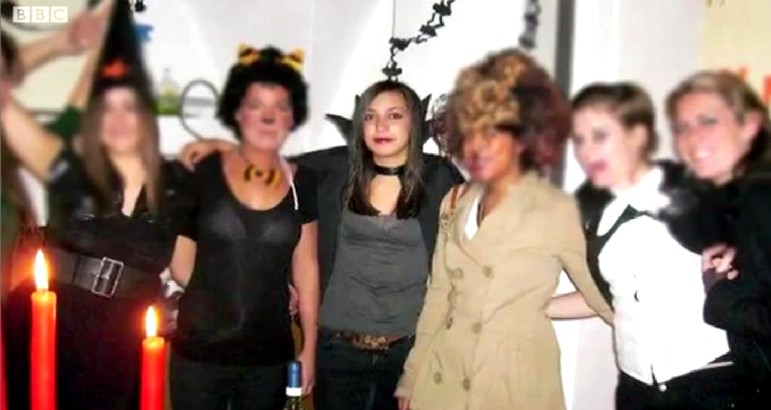
[From the BBC report: Meredith the night before the cruel, deadly attack with her Halloween friends]
This is the painstaking and obviously expensive report by Andrea Vogt and Paul Russell with interviews in London, Seattle and Perugia.
It was aired by the BBC on 17 February. Considerable time is allocated to defense lawyers and experts and the Knox family and Ann Bremner of the FOA taking their best shots at explaining how Knox could maybe have not been involved.
Still, the sheer mass of the evidence remains as the 80,000 pound elephant in the room, lacking any hint of a realistic alternative explanation. Three people committed the horrific attack, including Rudy Guede and two others.
Only Knox and Sollecito remain pointed to by dozens of evidence points as those two others. Not one single evidence point indicates anyone else was involved. The Masssei trial court got it right as the Nencini appeal court just confirmed.
We will enquire if we can embed the hour-long video. But as it may be picked up by US and other foreign media outlets, we will start by simply summarizing it soon. Assessents by those who have already seen it are welcomed.

